What’s become of Otl Aicher’s former abode? A visit to the Allgäu.
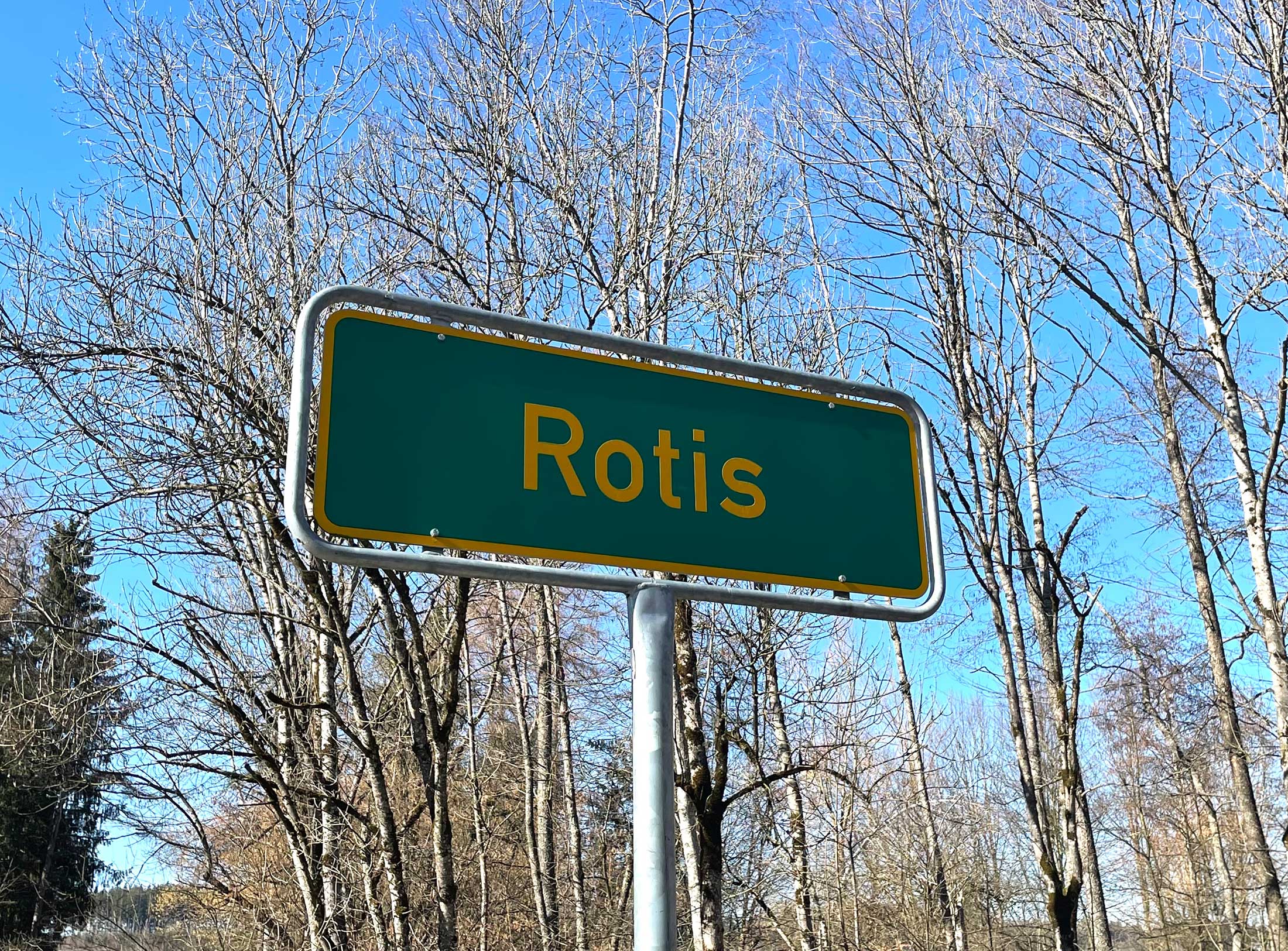

What’s become of Otl Aicher’s former abode? A visit to the Allgäu.
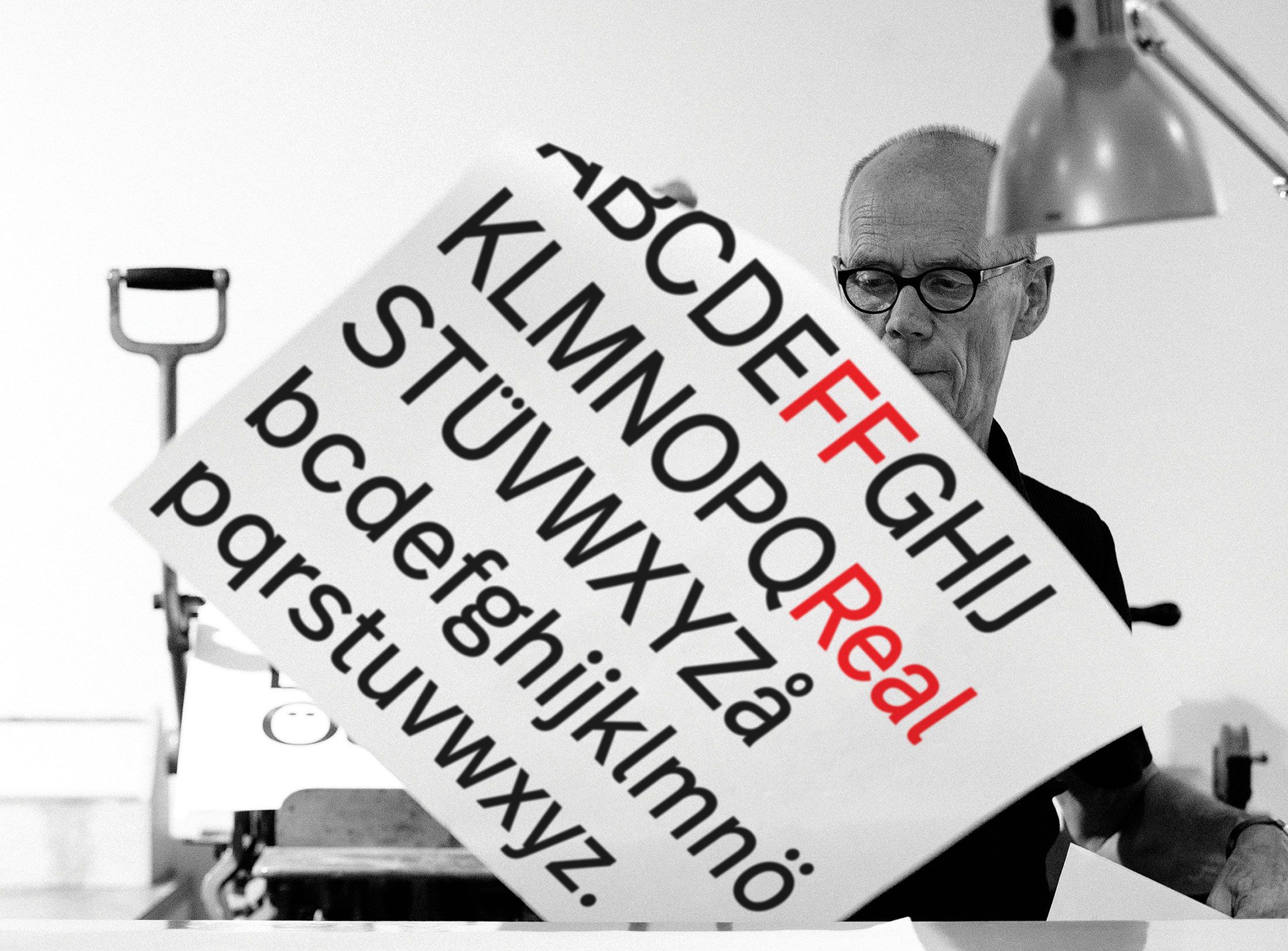
Interviewed: Erik Spiekermann, type designer, author and Aicher critic.
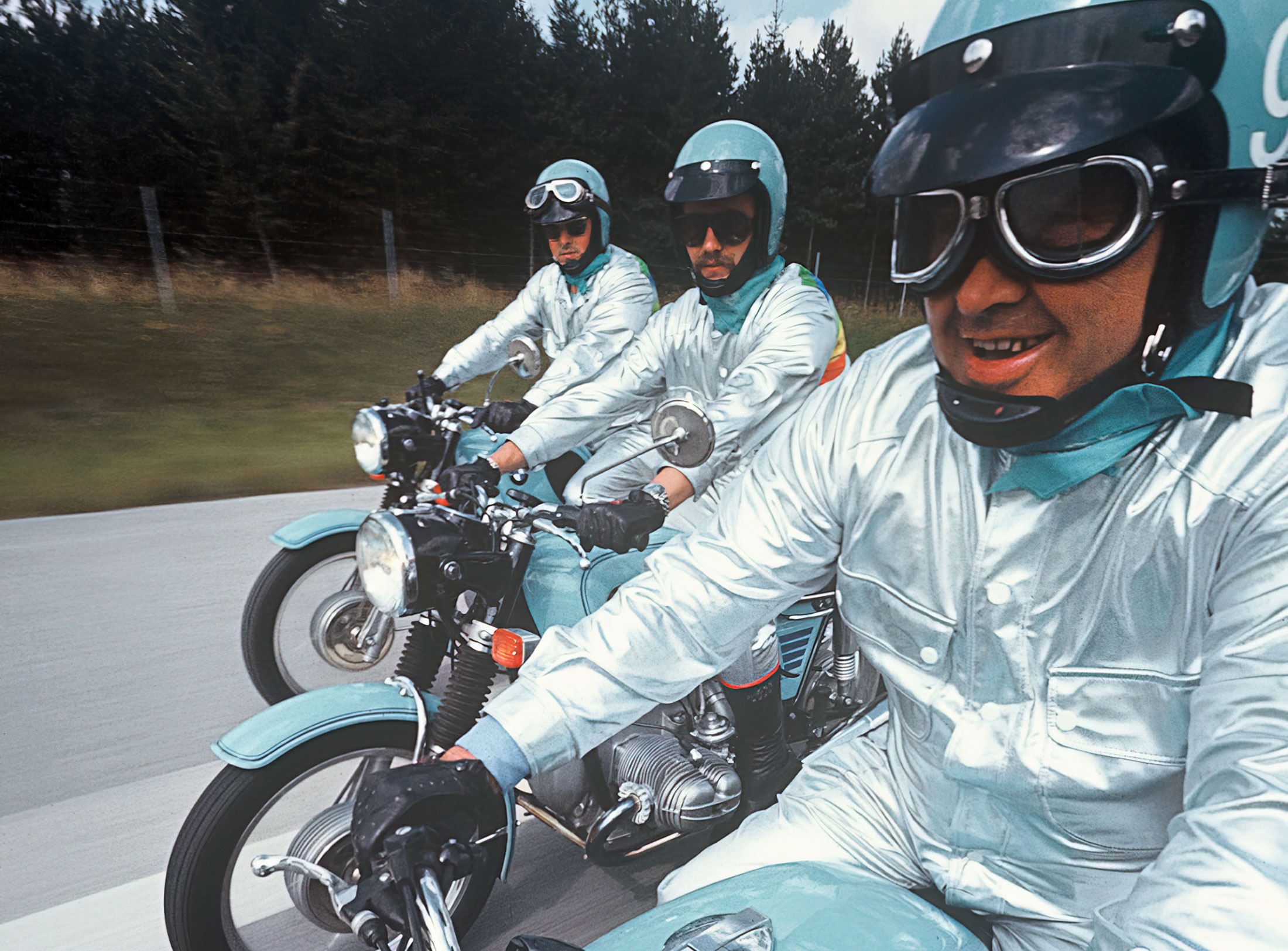
Technology: a central notion and fixed point of perspective in the work of Otl Aicher.
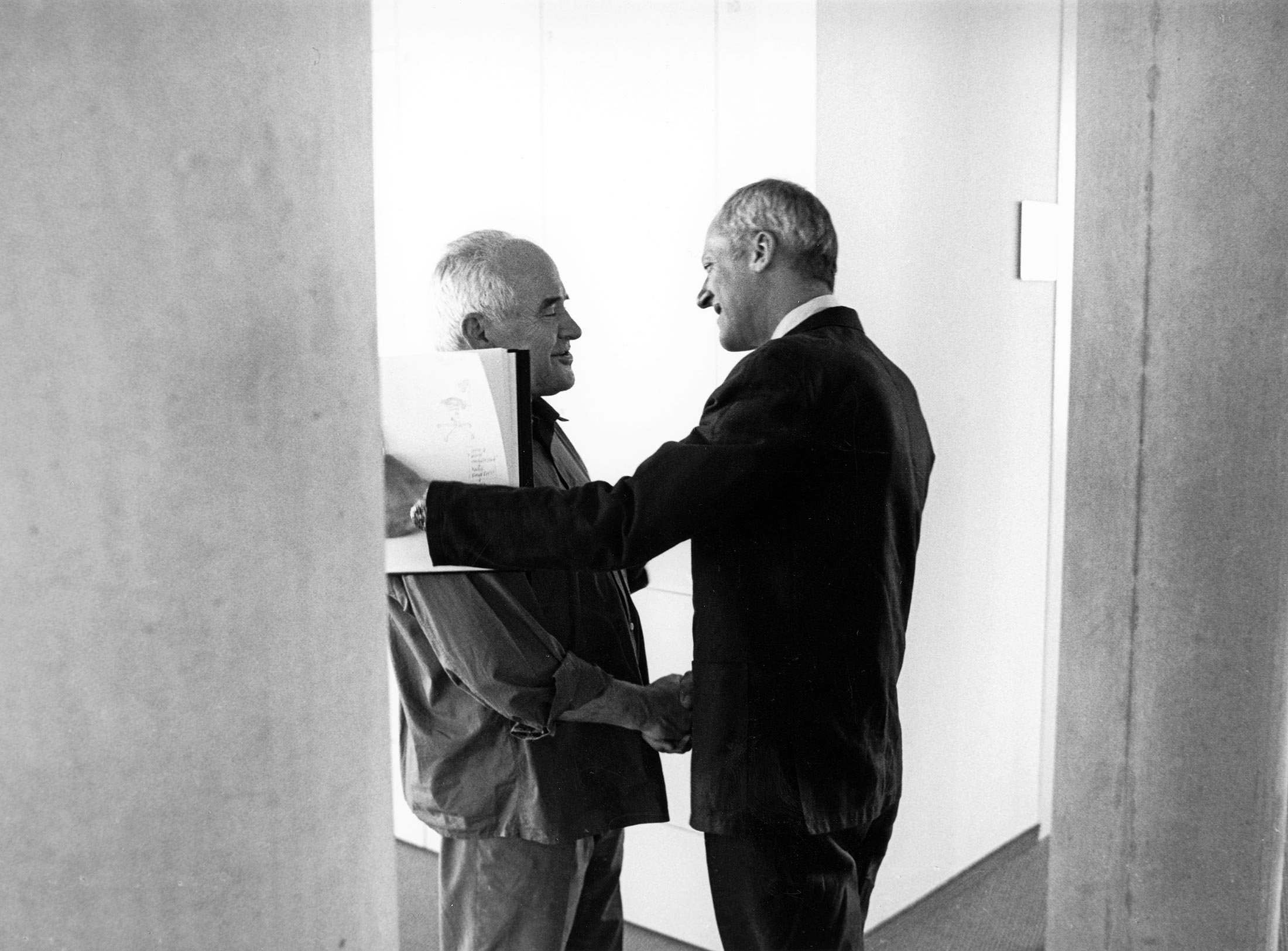
The British architect Norman Foster on his friendship with Otl Aicher: He had absolute integrity.
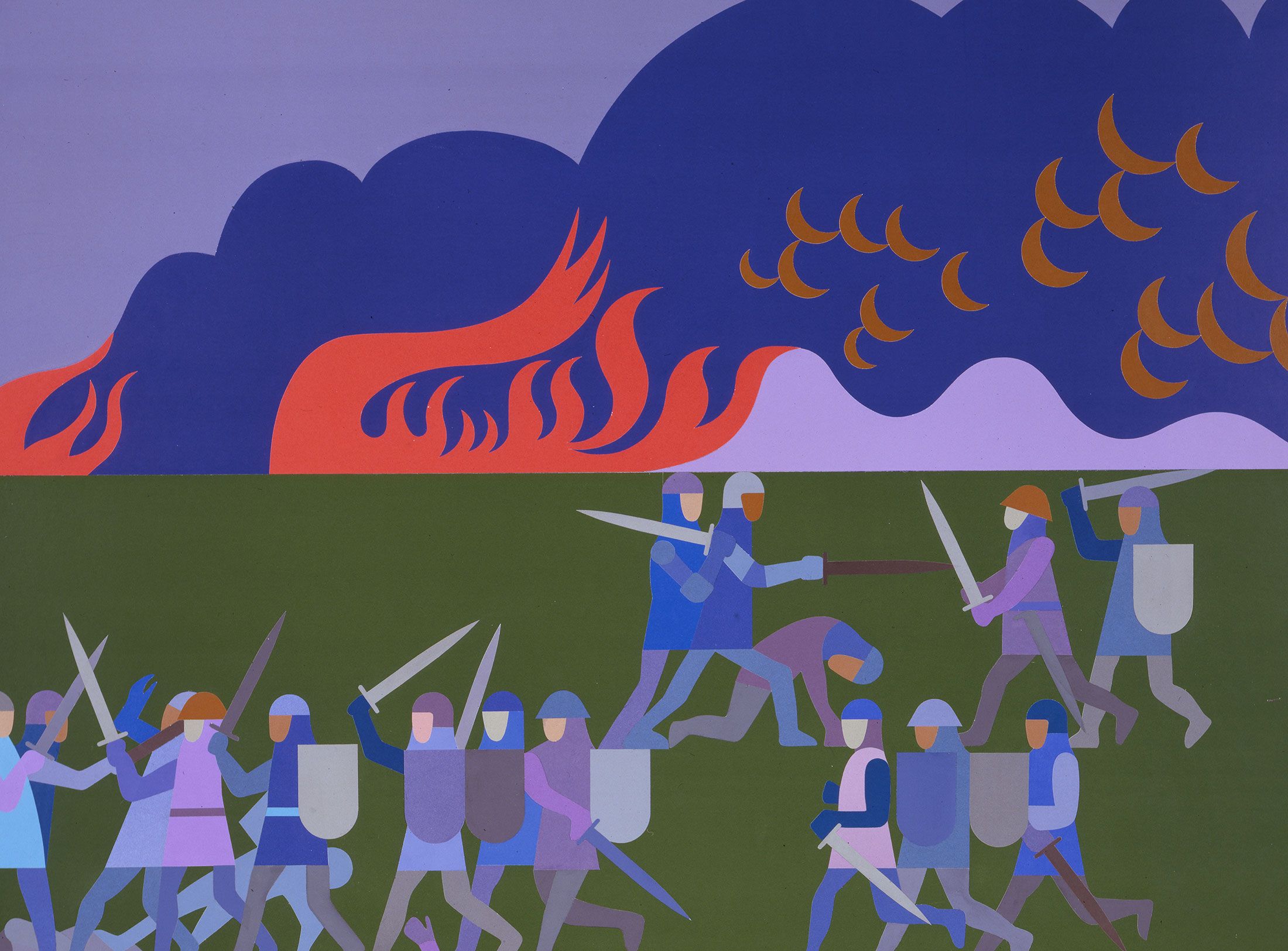
Thoughts on the colour palettes of Otl Aicher.
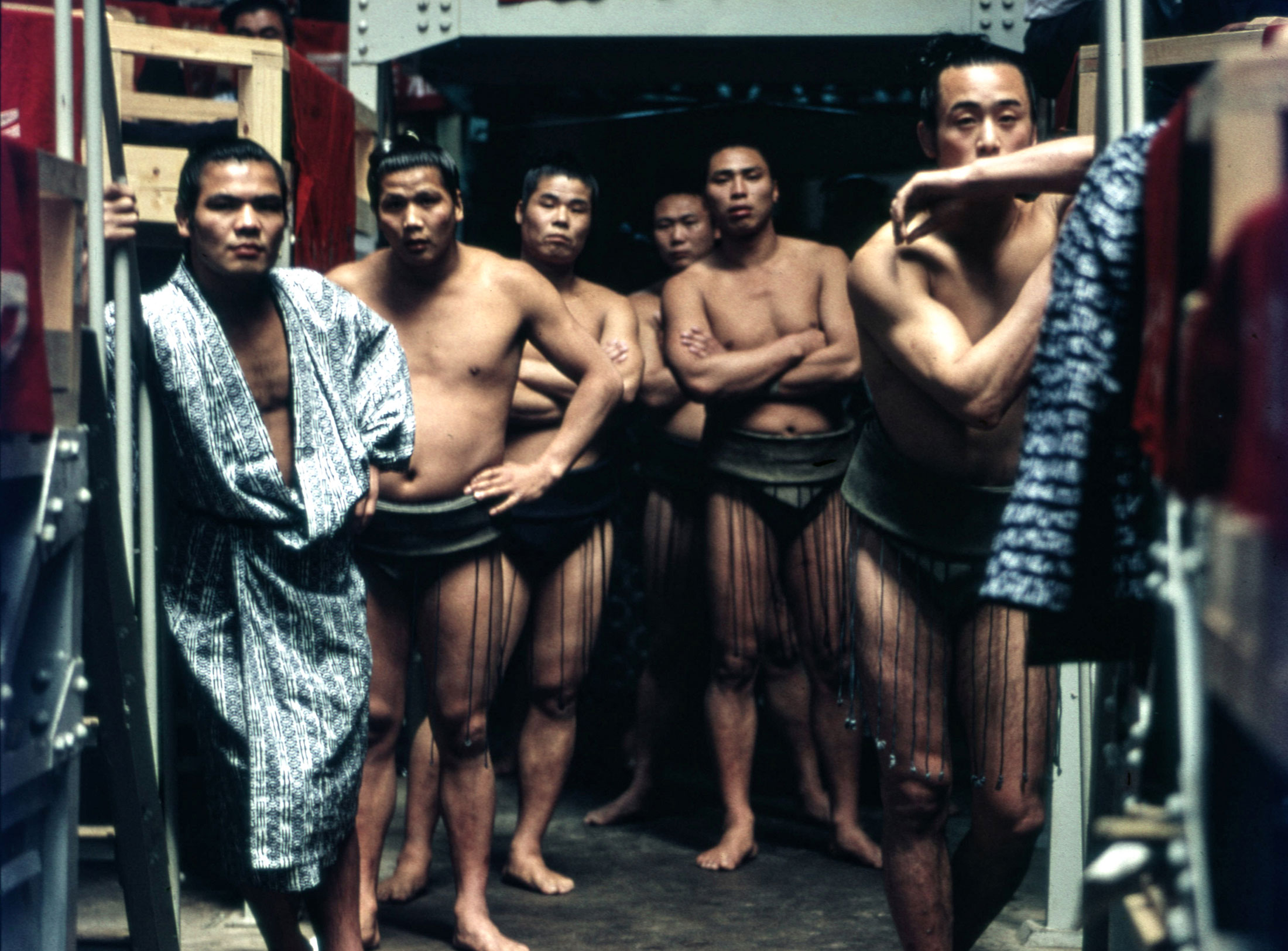
Absolute sharpness, reduction and strict rules determine the character of his pictures: Otl Aicher as photographer.
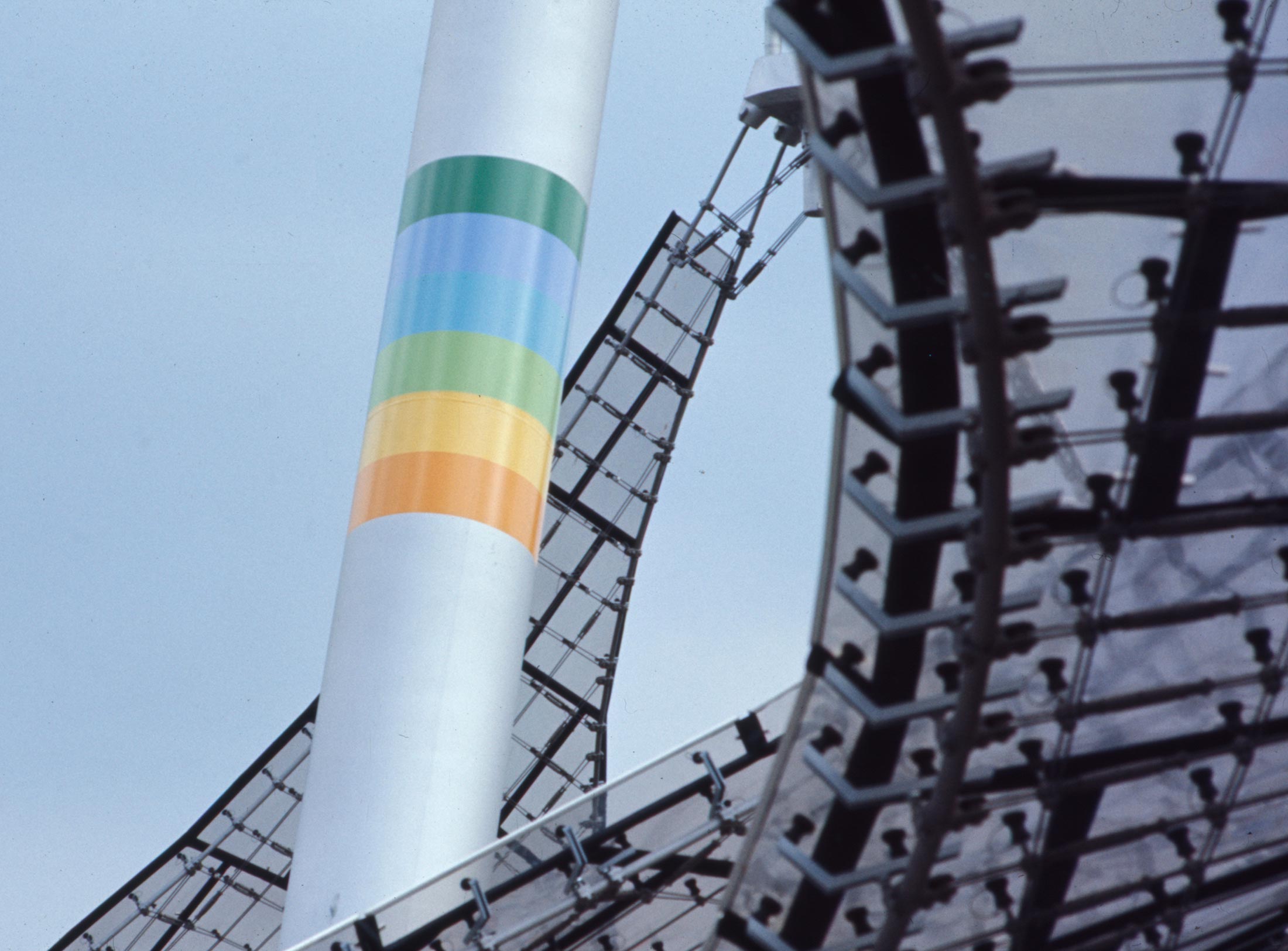
Under Otl Aicher’s direction, designers, architects and landscape planners shaped the face of the Olympic Games 1972.
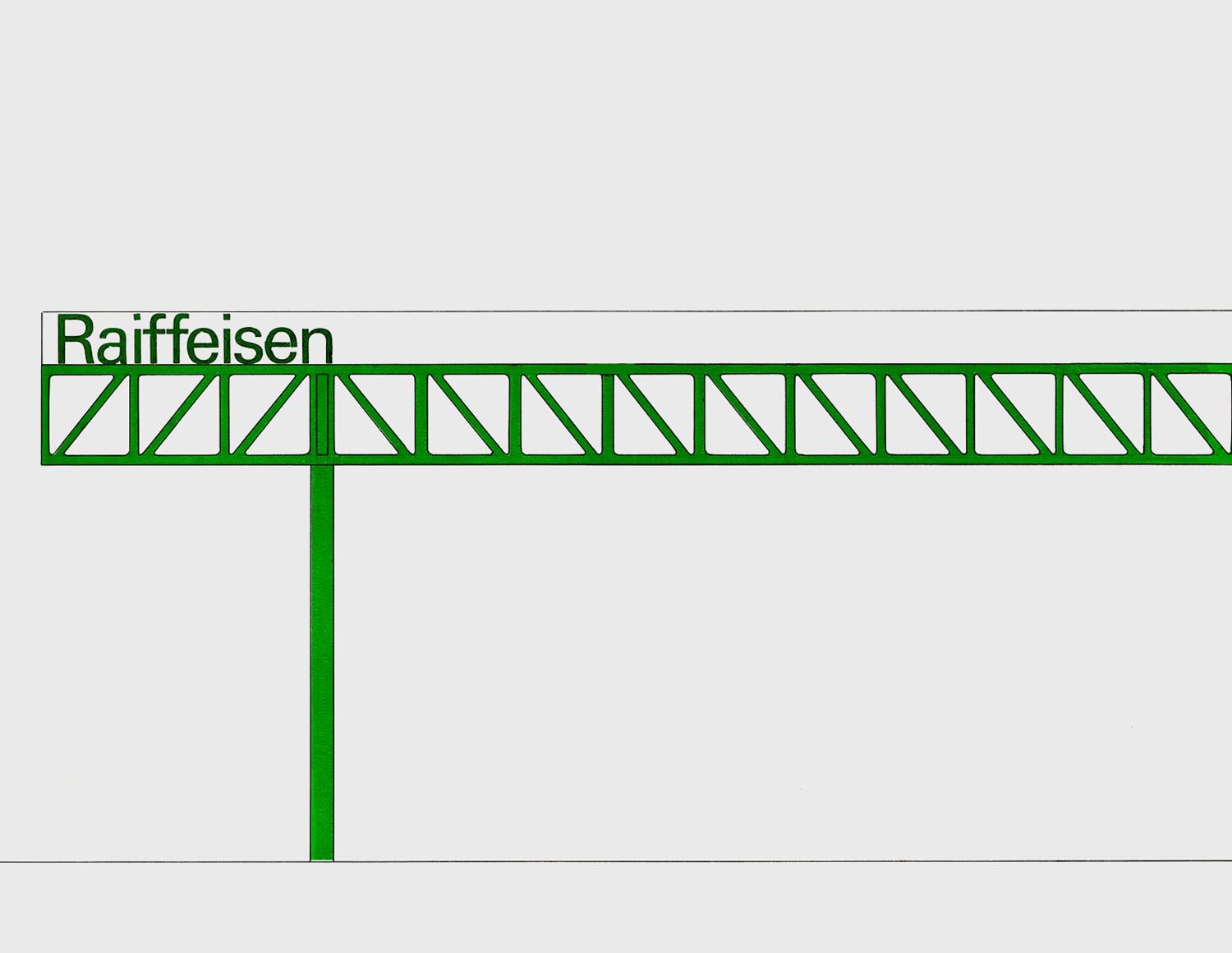
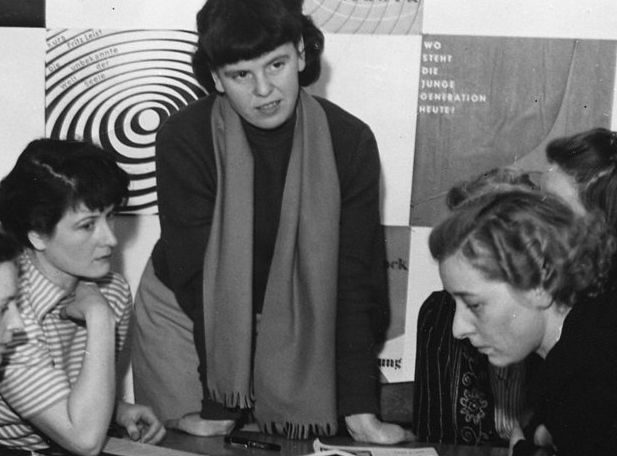
Inge Aicher-Scholl preserved the legacy of the White Rose.
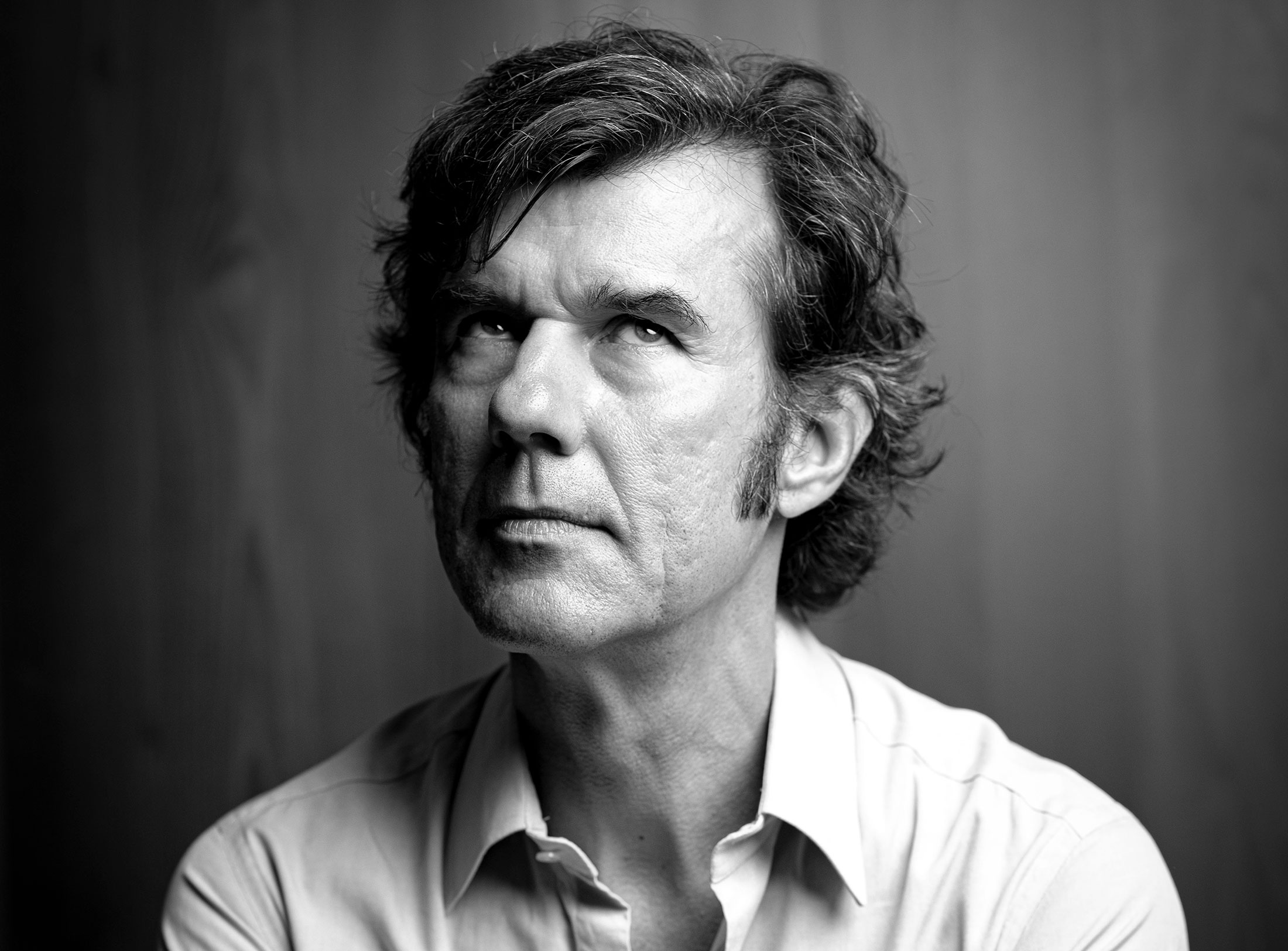
An interview with design icon Stefan Sagmeister about typefaces, beauty and the legacy of Otl Aicher.
The International Design Center Berlin (IDZ) invites you to a slide show and panel talk at Architektur Galerie Berlin on 20 October. Karsten de Riese and Prof. Michael Klar will report on a photo reportage commissioned by BMW that took them to Tunisia in 1975 together...
On the occasion of the 50th anniversary of the 1972 Olympic Games, the IDZ invites you to a discussion on the vision of the Munich Games and the status quo as well as the future of the Olympic movement on 26 August. The event at Berlin’s Akademie der Künste on Pariser...
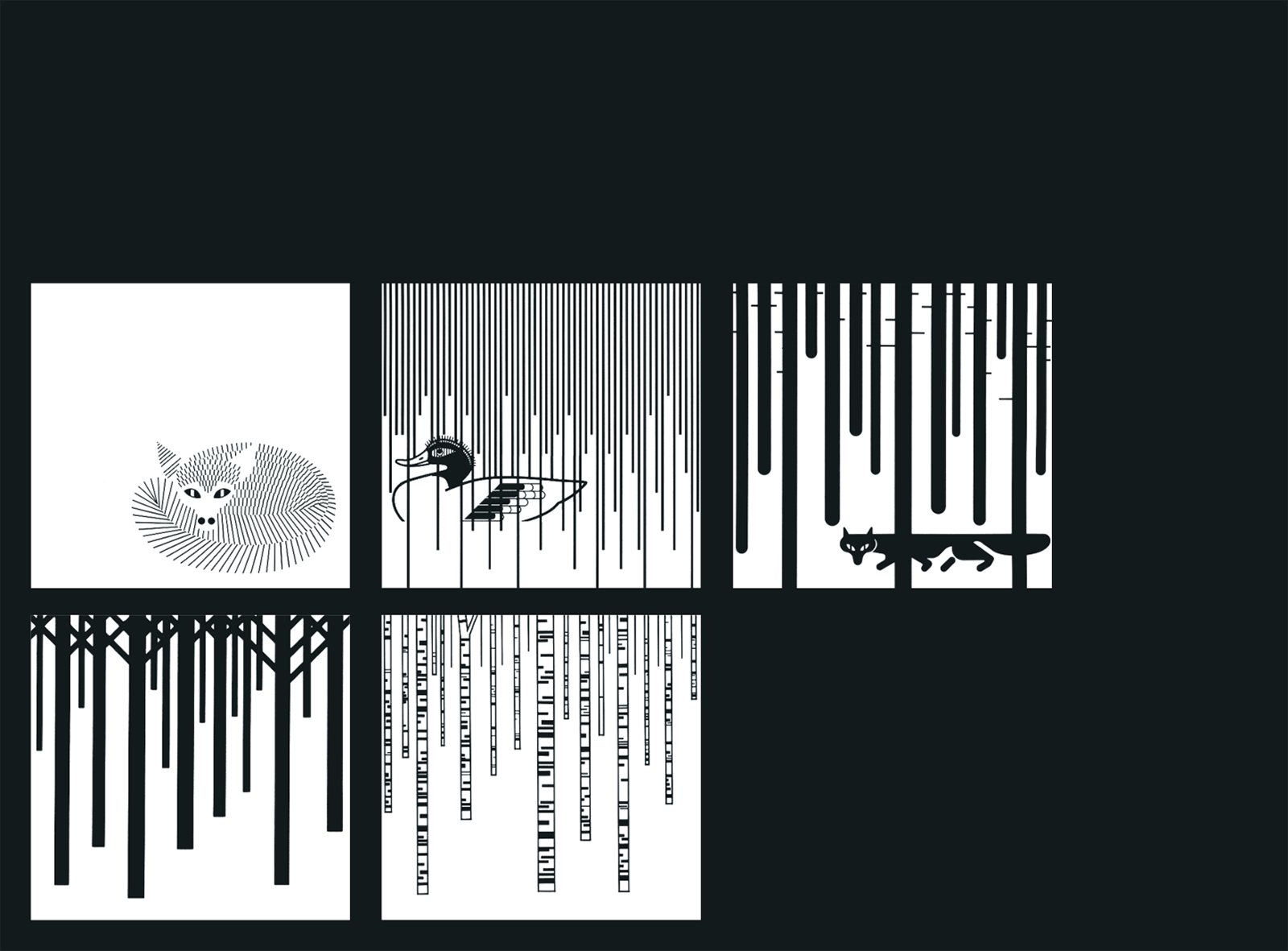
Isny im Allgäu owes Otl Aicher a corporate design that is concise, bold and singular.
With a retrospective of Otl Aicher’s book “kritik am auto – schwierige verteidigung des autos gegen seine anbeter” (Criticism of the Car – Difficult Defence of the Car against its Worshippers) published in 1984, the IDZ continues its series of events on the “otl...
Today marks the centenary of Otl Aicher’s birth. The International Design Center Berlin (IDZ) is taking this date as an opportunity to pay tribute to this great designer. With otlaicher100.de, a new online platform is being launched – a curated space that provides...
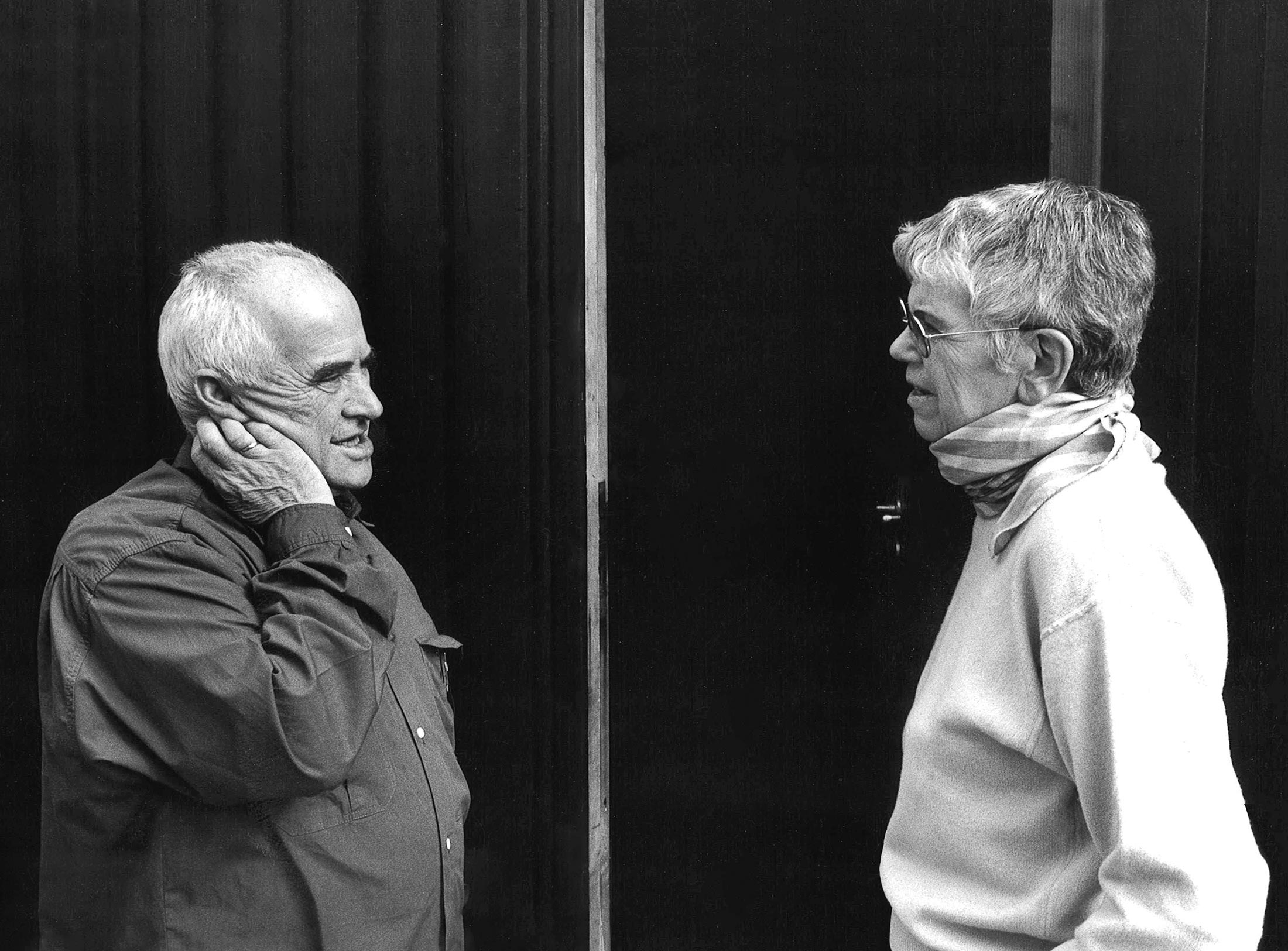
Reflections on Inge Aicher-Scholl and Otl Aicher.
The International Design Center Berlin (IDZ) is taking Otl Aicher’s centenary as an opportunity to pay tribute to this great designer and to make his work visible. An online platform and a series of events will address Otl Aicher’s multifaceted cosmos of topics and...
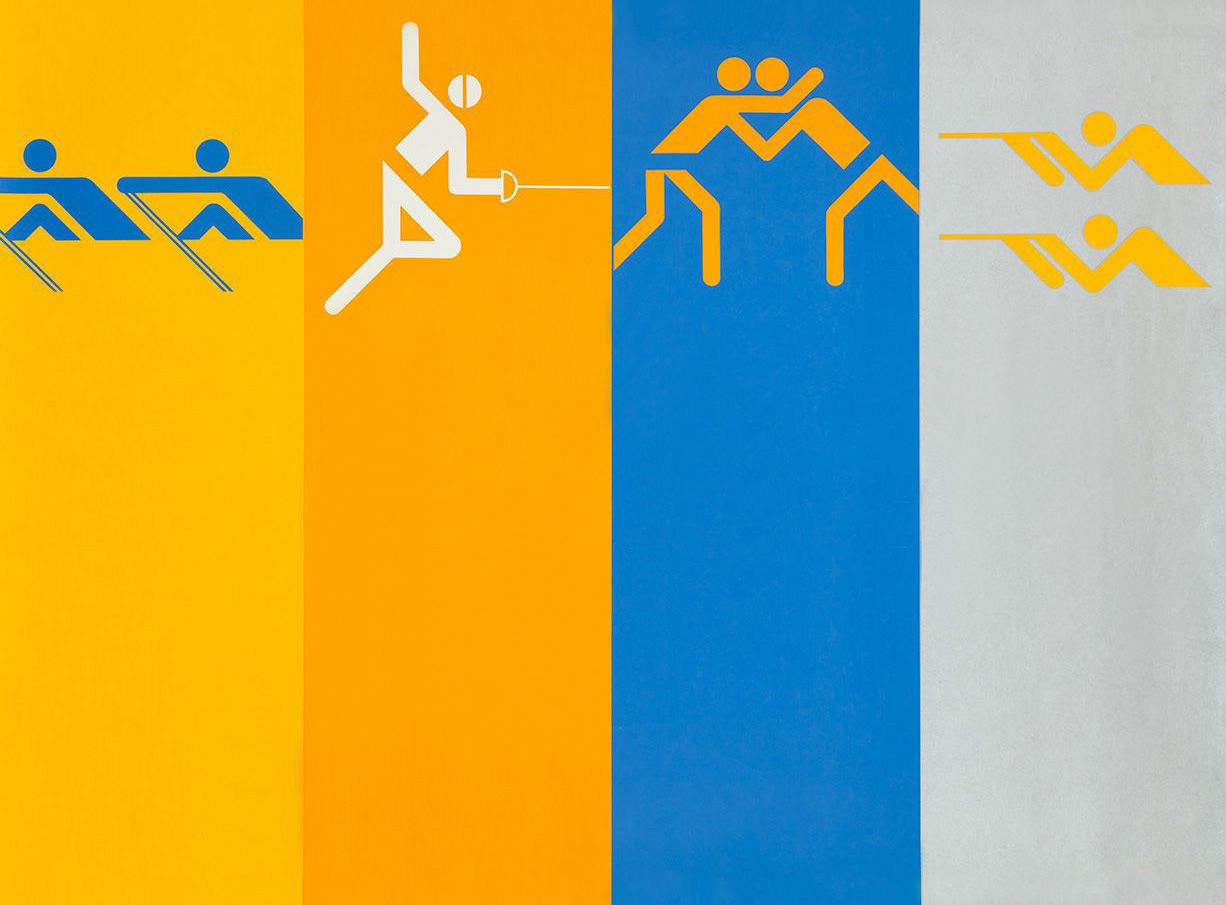
Eine Stadt leuchtet: Mit seinem farbenfrohen Erscheinungsbild der XX. Olympischen Sommerspiele 1972 setzte Otl Aicher ein Signal. Die junge Bundesrepublik war in der Moderne angekommen.
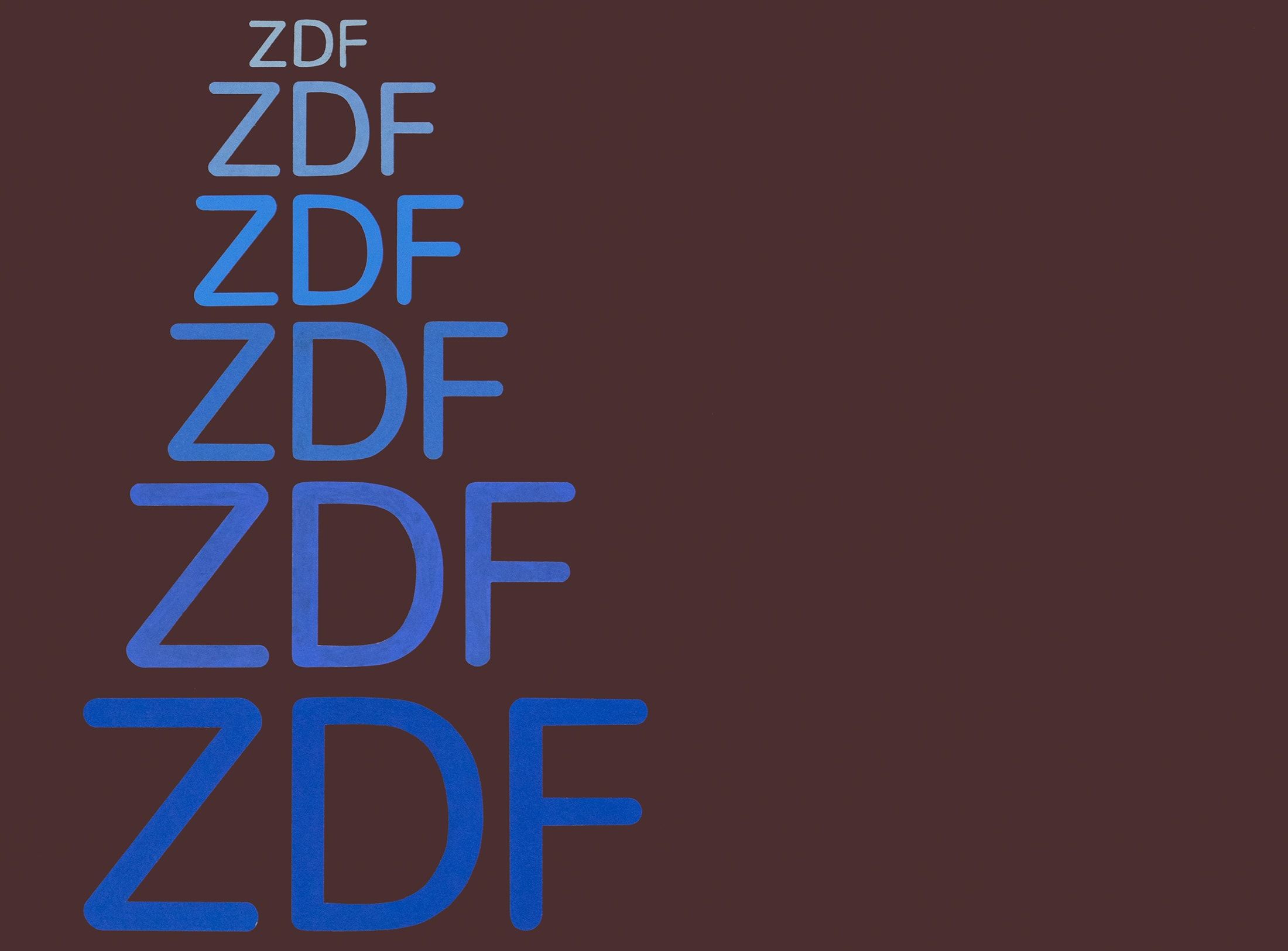
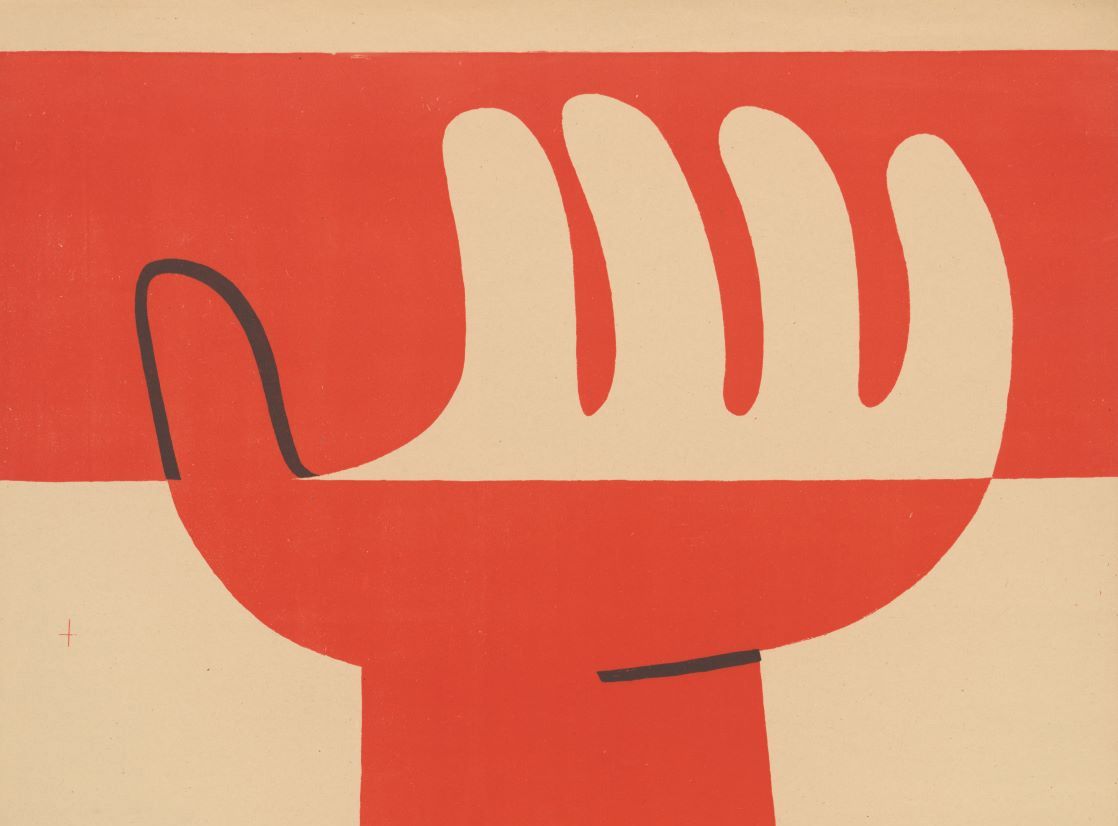
Otl Aicher’s Poster displays for the Ulmer Volkshochschule (Ulm Adult Education Centre).
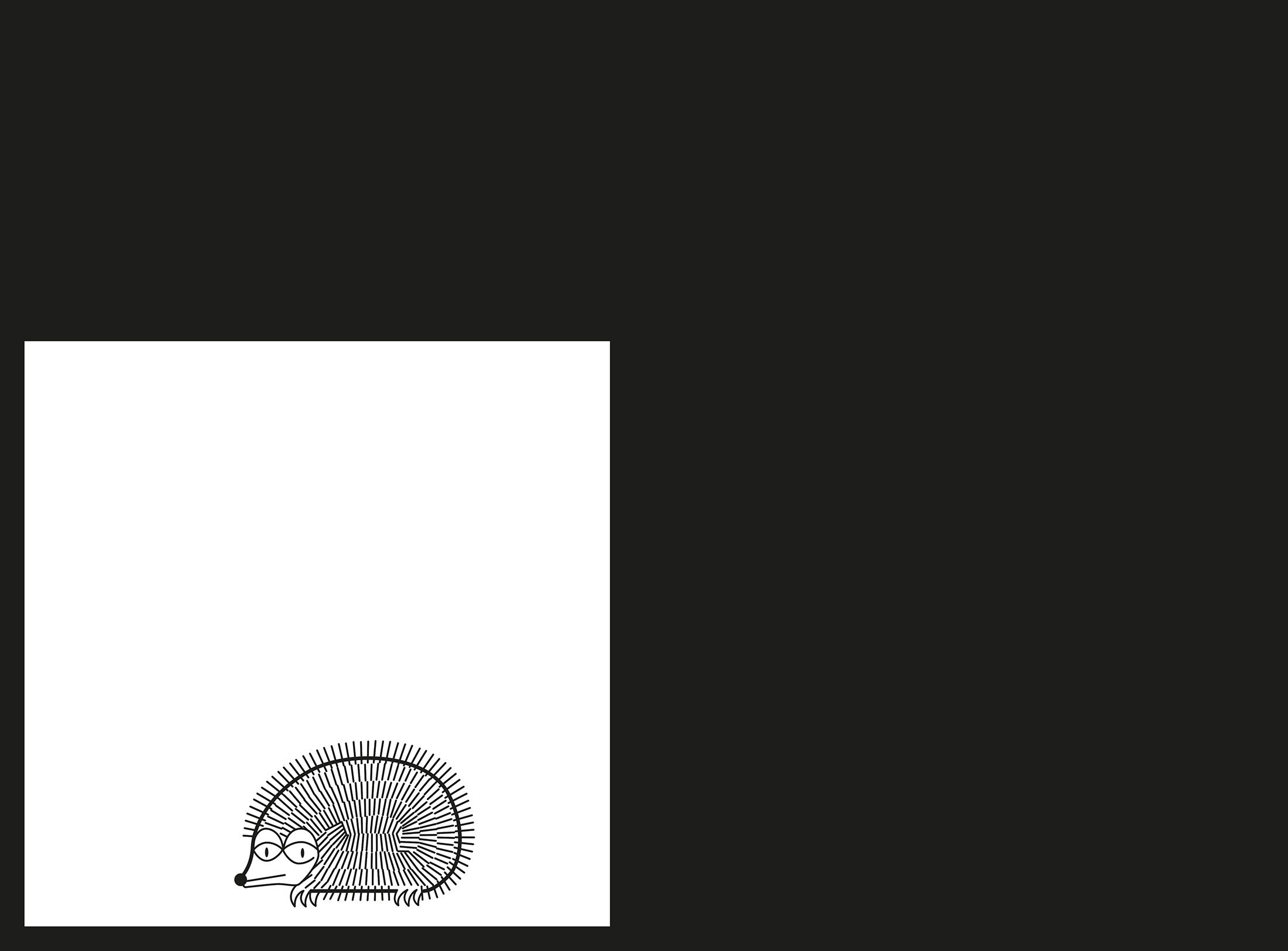
From O to R: Let’s talk about a hedgehog, standardisation and neurotis for a change (please click on the letters).
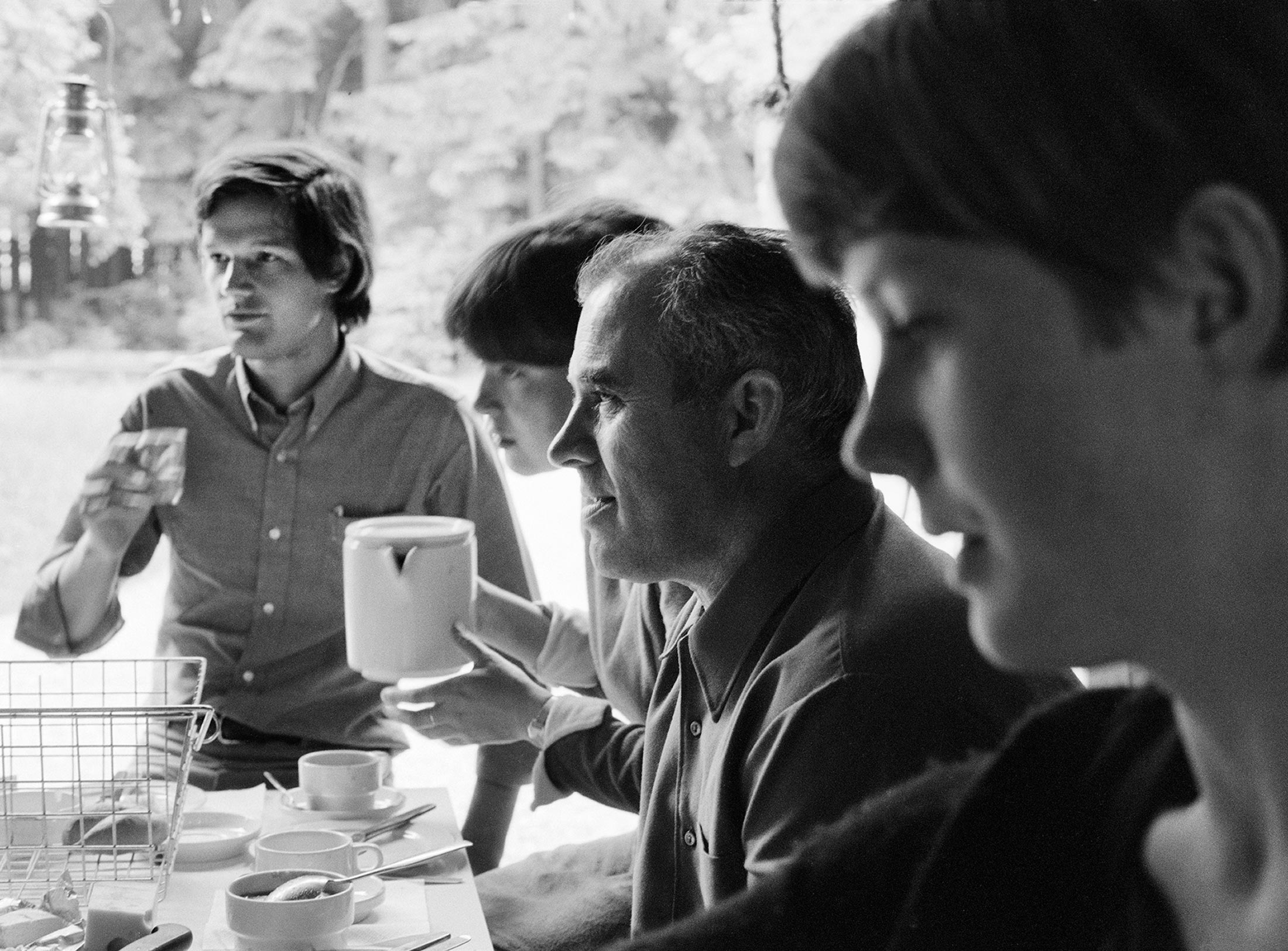
Otl Aicher’s Dept. XI team: the visual identity of the Munich ’72 Olympics was the work of graphic designers, illustrators and technical staff from all over the world.
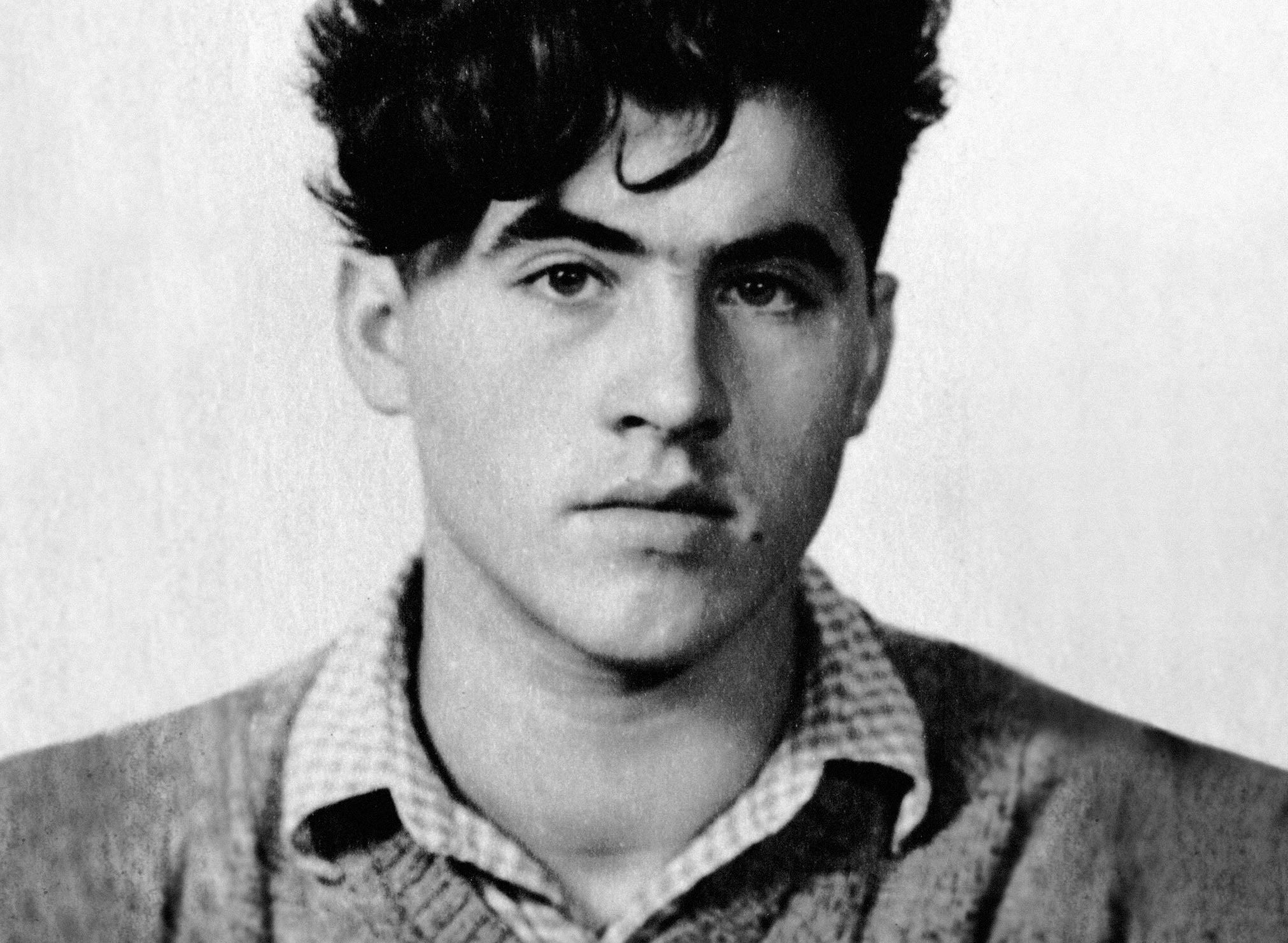
Aicher’s childhood and youth: the years 1922 to 1945.
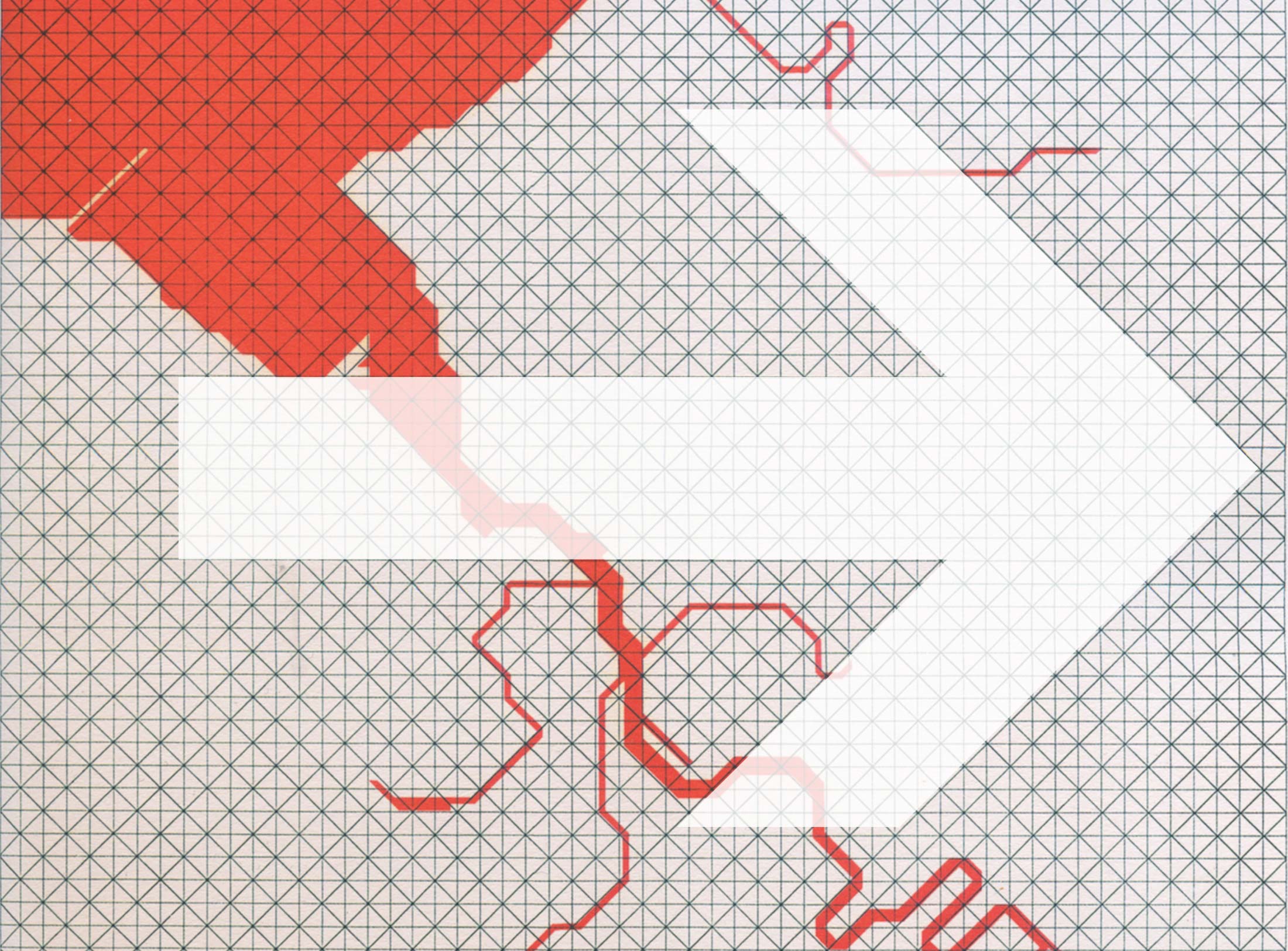
Otl Aicher’s signage systems for airports, metro stations and hospitals are considered exemplary to this day.
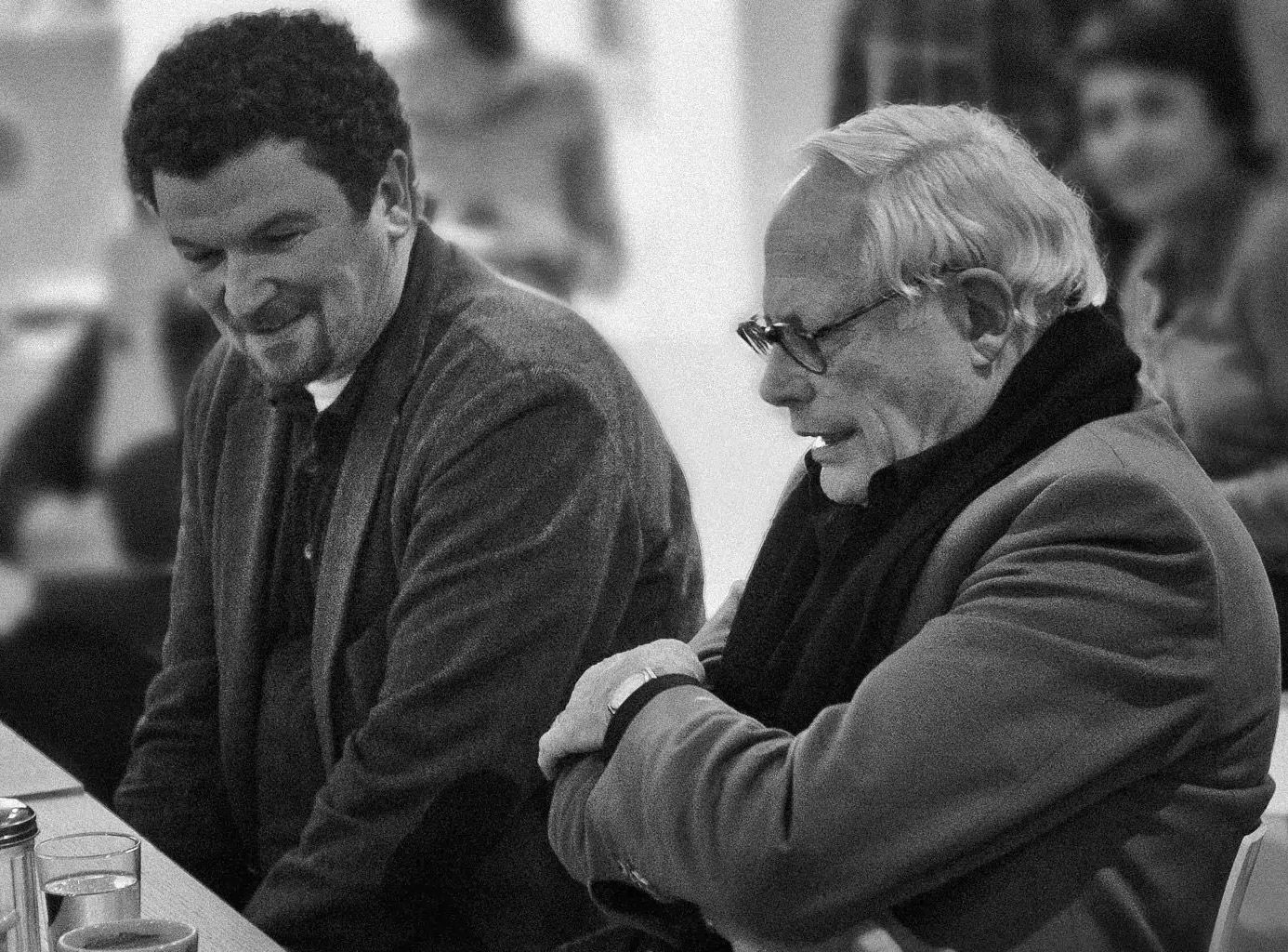
Der einstige Braun-Chef-Designer im Gespräch über den Co-Gründer der HfG.
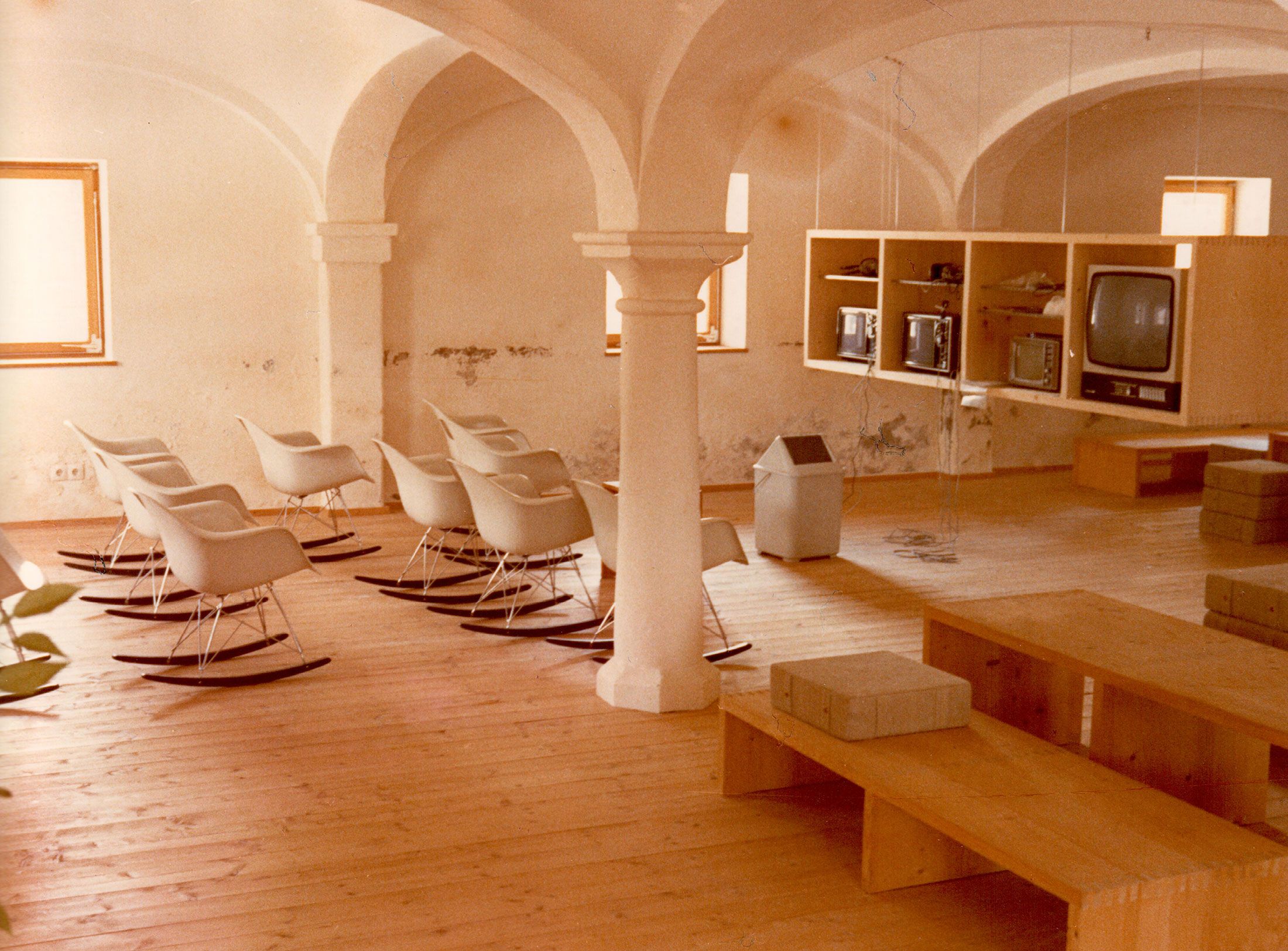
A Broadcast: What is his place in today’s world?
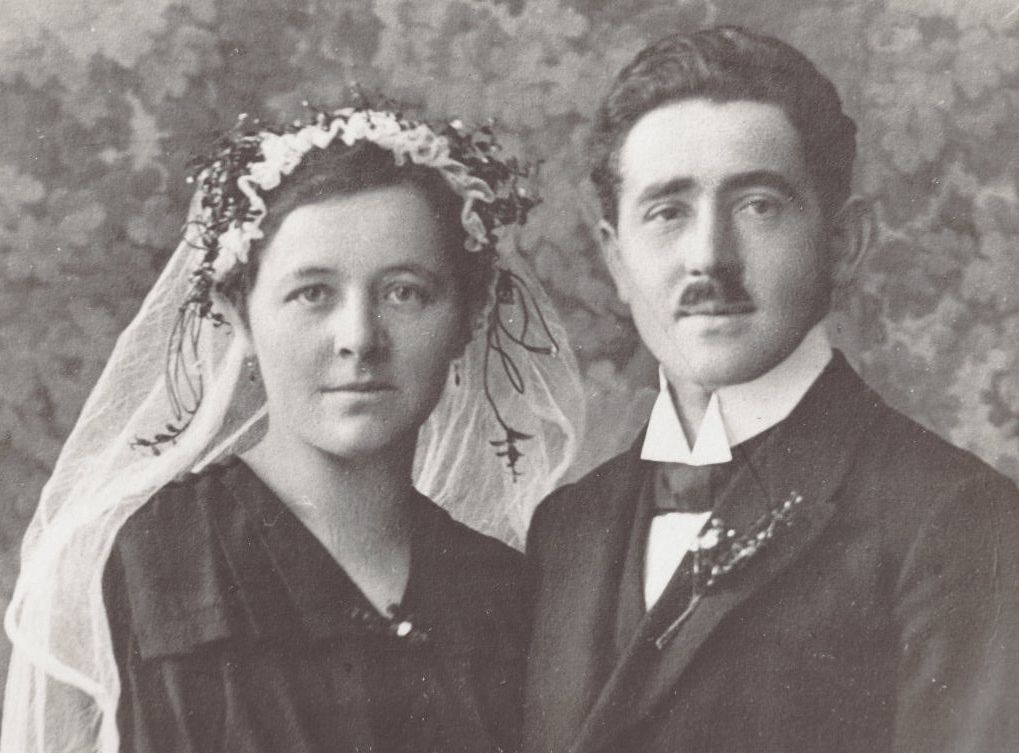
The Aichers: a brief family history.
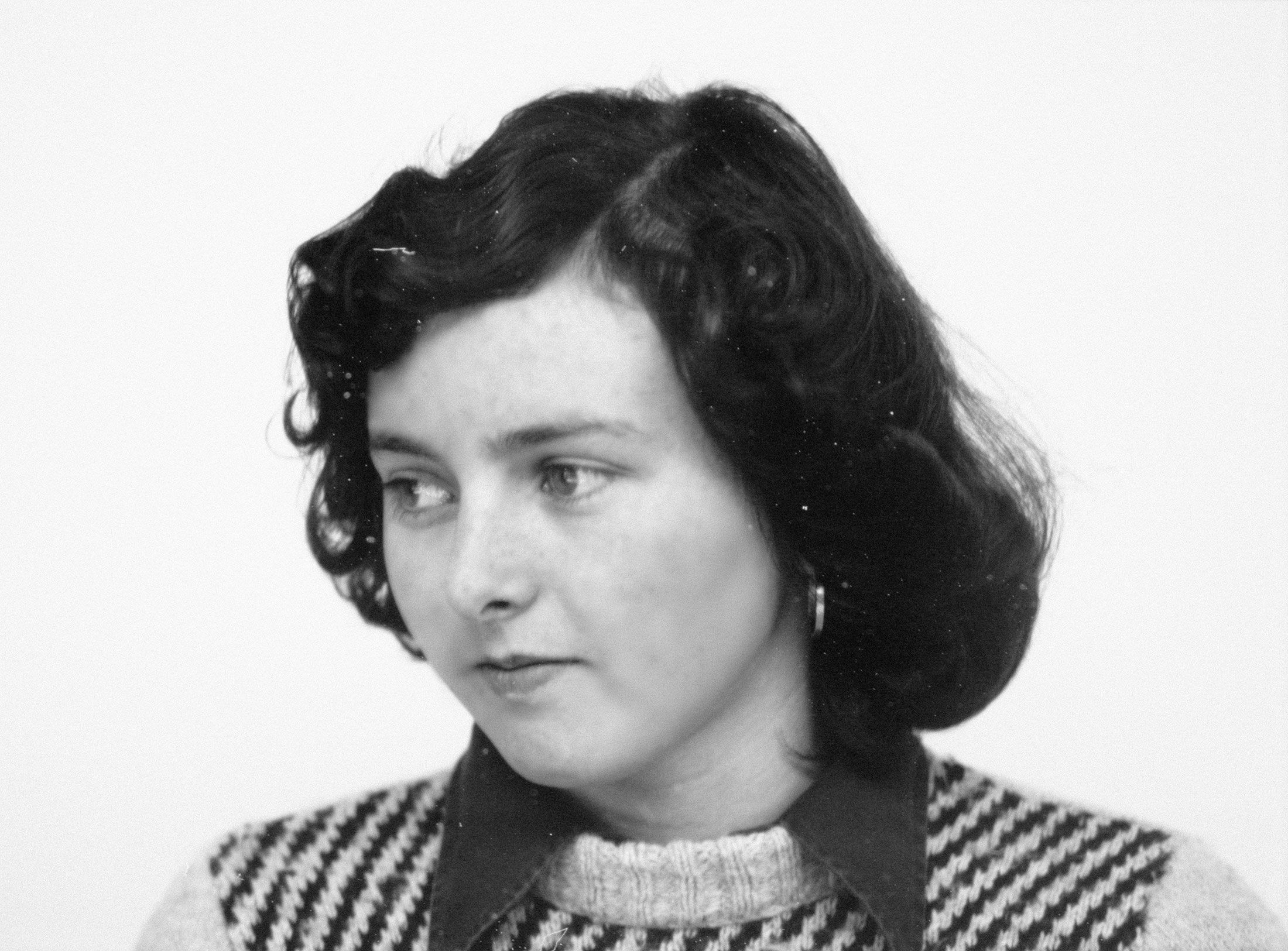
Drawing in Rotis: former Aicher co-worker Reinfriede Bettrich talks about hand sketches, the first computers and everyday life at the office.
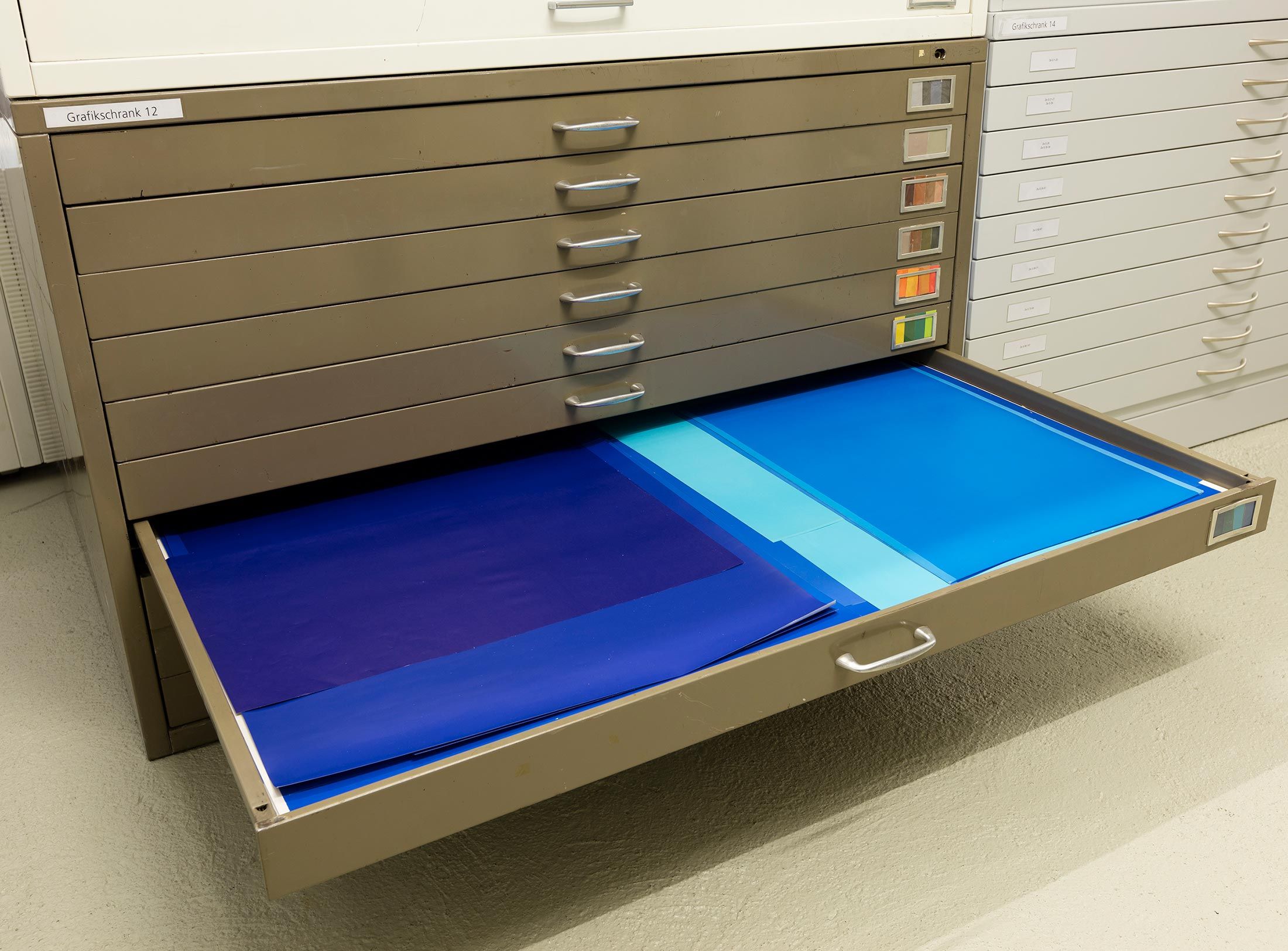
How Otl Aicher’s papers and materials came to the HfG-Archiv/Museum Ulm.
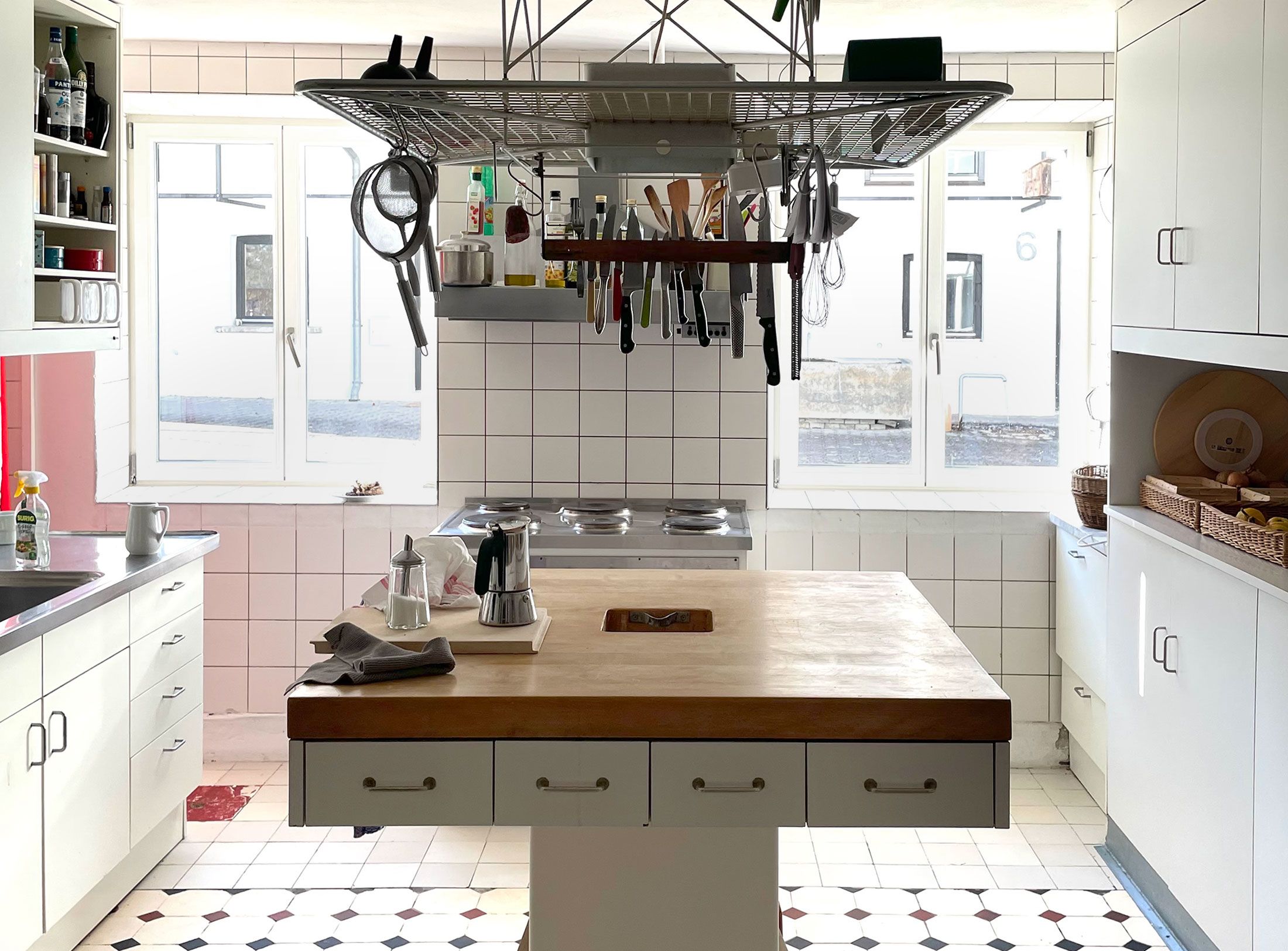
Die Küche zum Kochen (The Kitchen for Cooking) – the genesis of a book that has lost none of its relevance.
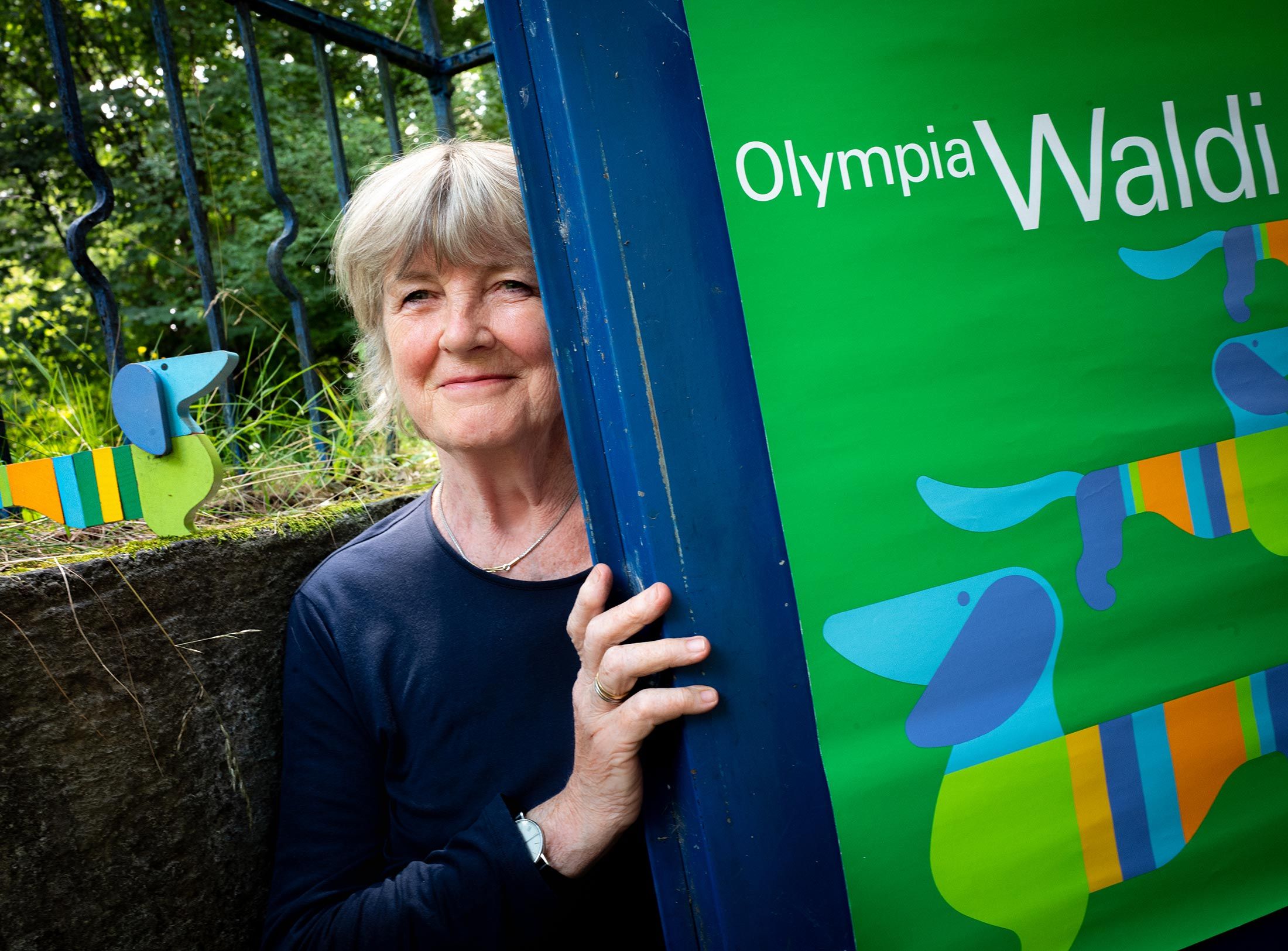
How a dachshund conquered the world: former Aicher staff member Elena Schwaiger on plush animals, fakes and the authentic mascot of the 1972 Olympic Games in Munich.
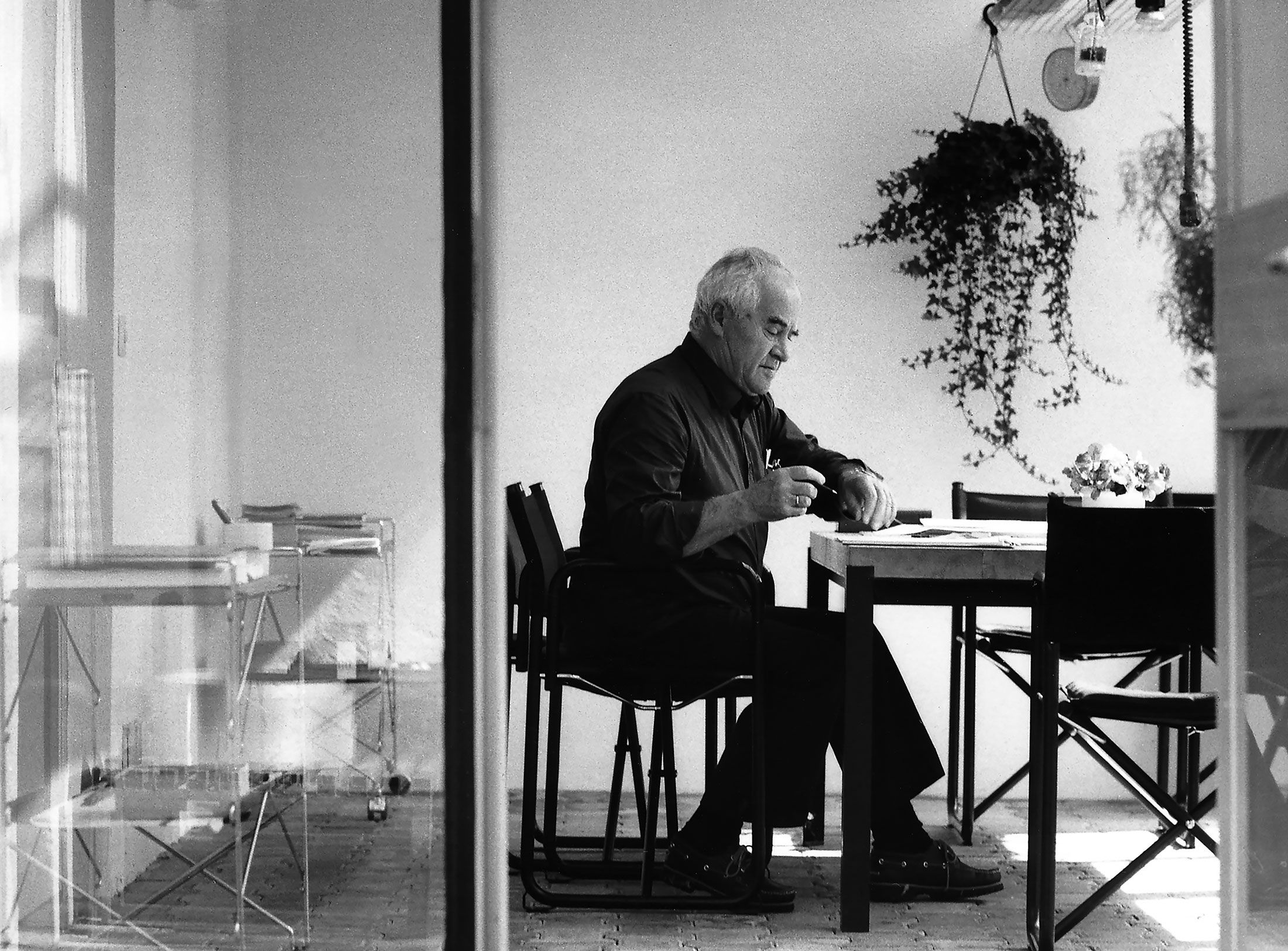
Le Violon d’Ingres or An Attempt to Defend the Writings of Otl Aicher.

Otl Aicher as the architect of Rotis.
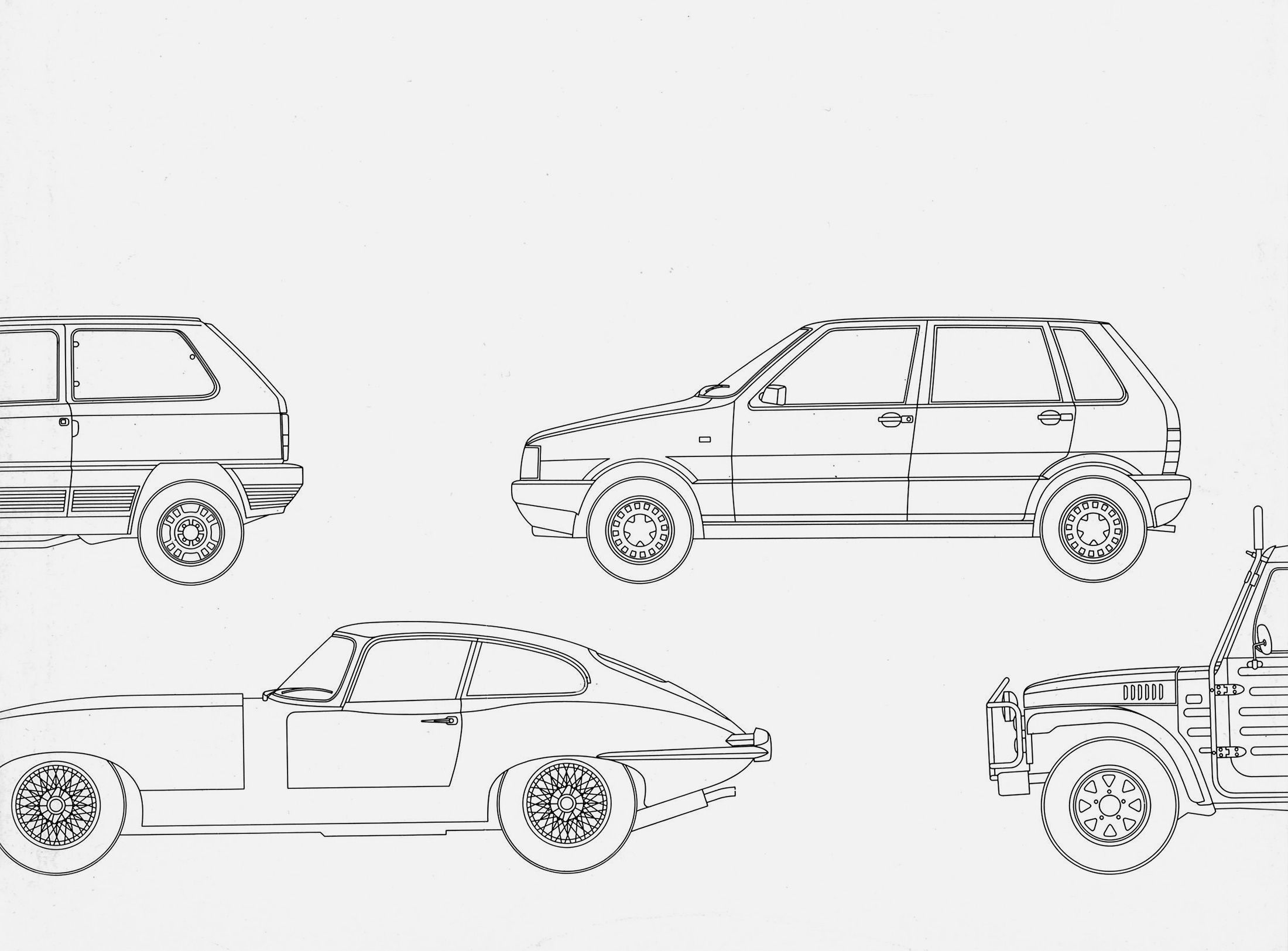
Otl Aicher and his critique of the automobile.
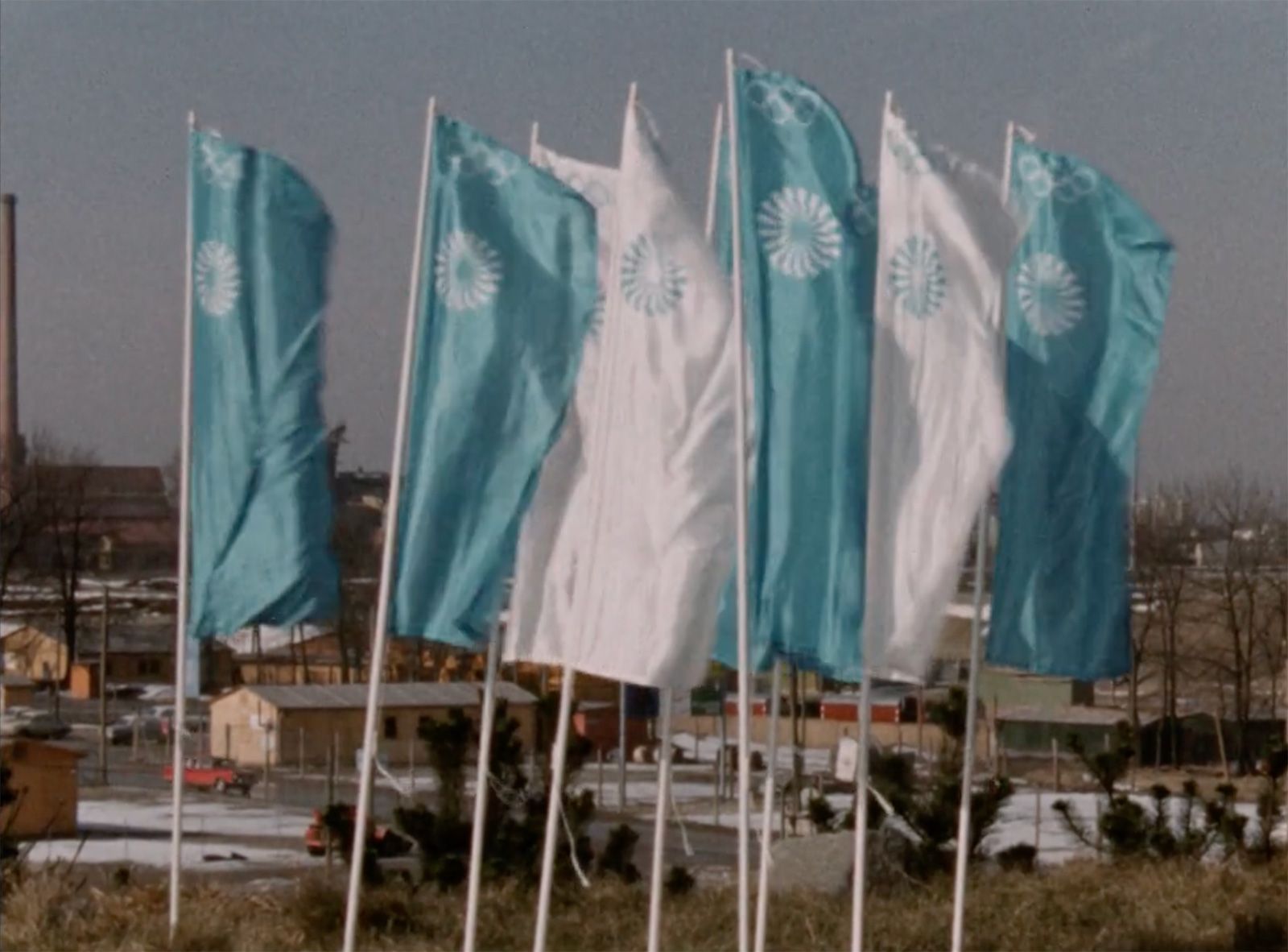
First broadcast: 15.02.1971 on Bayerischer Rundfunk, Munich (Only available in German).
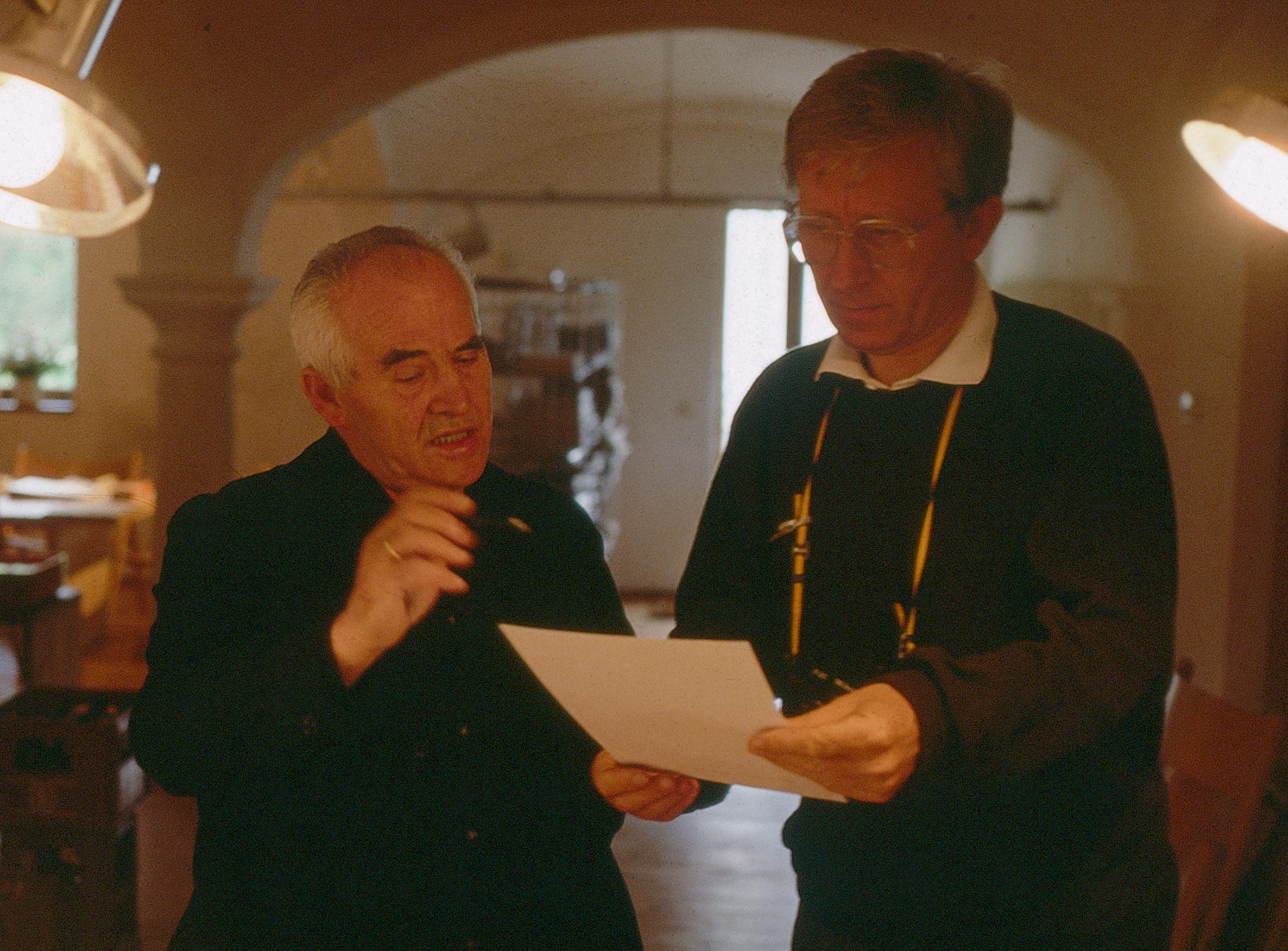
Interviewed: Jürgen Werner Braun on his collaboration with Otl Aicher.
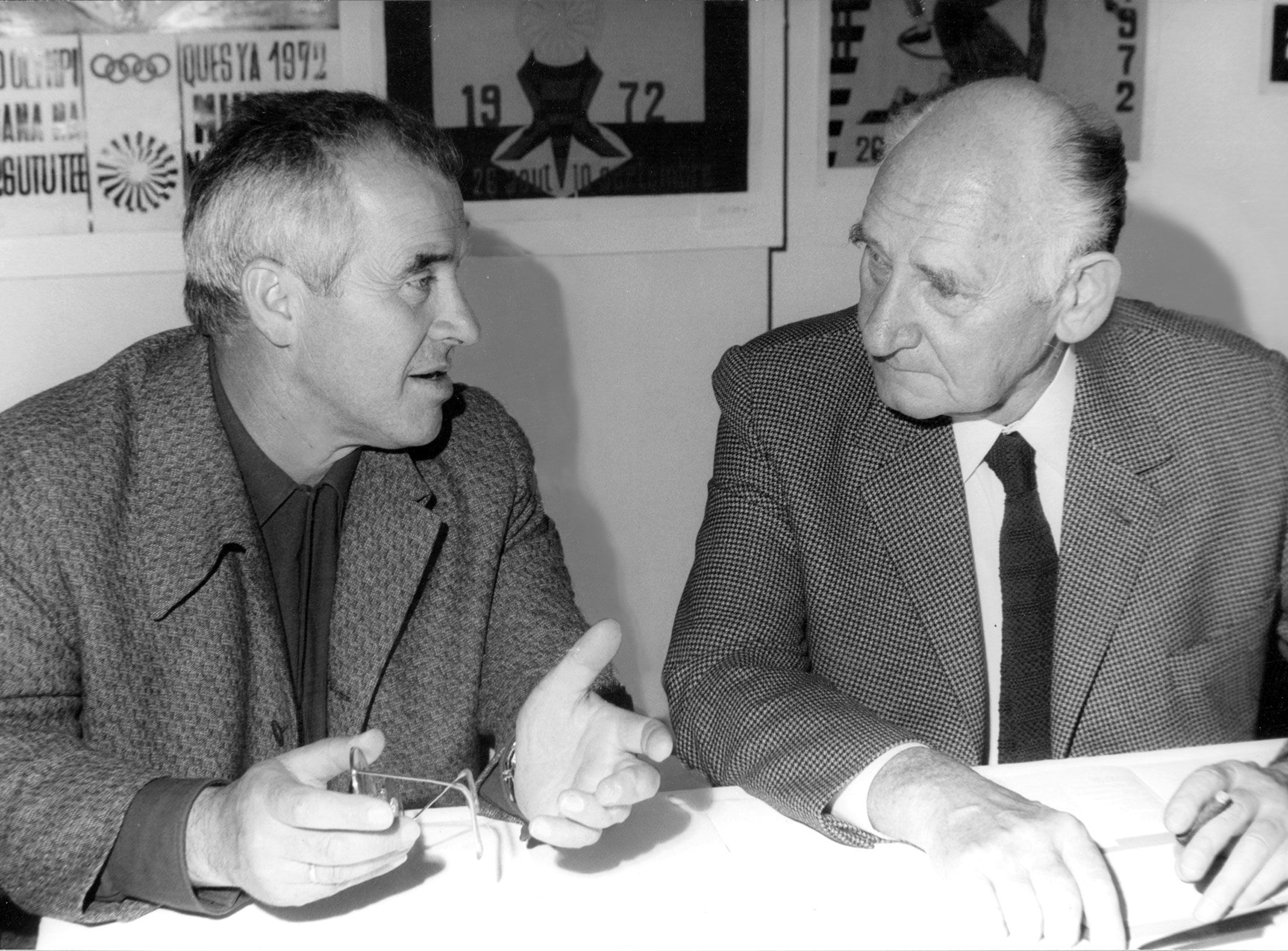
They created the signature of an epoch: designers Otl Aicher, Willy Fleckhaus, Anton Stankowski and Kurt Weidemann.

Schauraum am Laboratorium, from 12 February to March 19, 2023
On Sunday, February 12, 2023, at 5 p.m., the exhibition opening “Otl Aicher Revisited” will take place at the Schauraum am Laboratorium, Choisyring 10, in Saarlouis as part of the tour of the Hochschule der Bildenden Künste Saar.
The exquisite show confronts Aicher’s œuvre with current works and statements by budding creatives. They are the results of an in-depth university project.
During the winter semester of 2022/2023, a group of communication design students led by Daniela Spinelli, professor Indra Kupferschmid and professor Stefan Hauser had explored the designer’s oeuvre in a studio project. Their project has the beautiful title: “100 years of Otl Aicher, 100 questions, 100 typo-graphic reactions”.
During the semester project, the students devoted themselves to the work and person of the designer “Who was Otl Aicher? What influenced his work? What form did he find?”
The students’ works are on display, as well as a collection of around 120 Aicher posters, some of which are rare, for the Volkshochschule Ulm. These were donated by the former HBK Saar professor Andreas Brandolini to the Research Center for Artists’ Bequests, which is located at the Laboratory.
The exhibition in the showroom demonstrates a new, design-practical approach to archive holdings and the exciting reactions of young designers. The exhibition is on view through March 19. Opening hours: Tuesdays through Fridays from 10 a.m. to 5 p.m., Sundays from 2 p.m. to 6 p.m.
On Wednesday, March 15, at 7 p.m., there will be a lab talk with faculty and students involved in the exhibition. The talk is in the context of International Printmaking Day. Admission is free.
Showroom at the Laboratory
Choisyring 10, 66740 Saarlouis
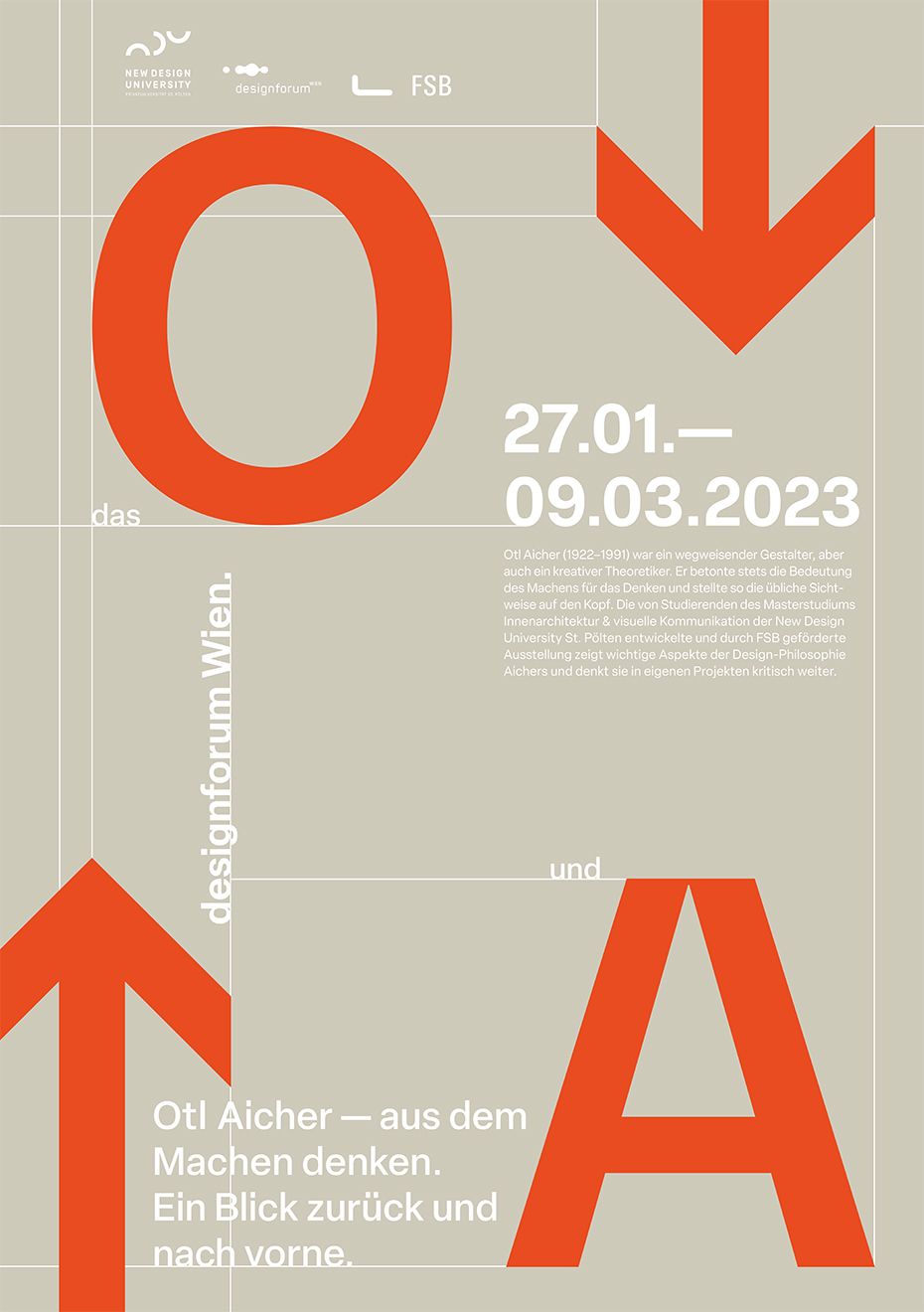
designforum Wien, from 27. January 27 to March, 09, 2023
Aicher today: “On the occasion of his 100th birthday, a new generation of designers and digital natives will possibly ask themselves whether they can still learn something from Otl Aicher,” wrote the Düsseldorf advertiser and former Aicher collaborator Bernd Kreuz recently. He, at least, had high hopes.
The company FSB (Franz Schneider Brakel GmbH + Co KG), whose logo and corporate design were shaped by Otl Aicher from the mid-1980s onwards, has taken up Kreuz’s wish and is promoting young designers’ involvement with the old master of graphic design. The company has taken Aicher’s 100th birthday as an opportunity to initiate an intensive examination of his person and work together with the New Design University.
With the support of FSB, students and teachers from the Interior Design & Visual Communication Masters program, led by Martin Düchs and Christine Schwaiger, have conceived an exhibition that shows Otl Aicher’s thinking and doing and critically rethinks it on the basis of his own projects. The exhibition can now be seen in Vienna.
In addition, a full-day symposium will be held at designforum Wien on February 28.
Registration at: www.fsb.de/oa
Quartier 21, MQ
Museumsplatz 1, 1070 Vienna, Austria
Opening hours:
Mon-Fri 10:00-18:00, Sat, Sun, holidays 14:00-18:00.
Normal price: 4 €, reduced: 2 €, For designaustria members & NDU students: 0 €
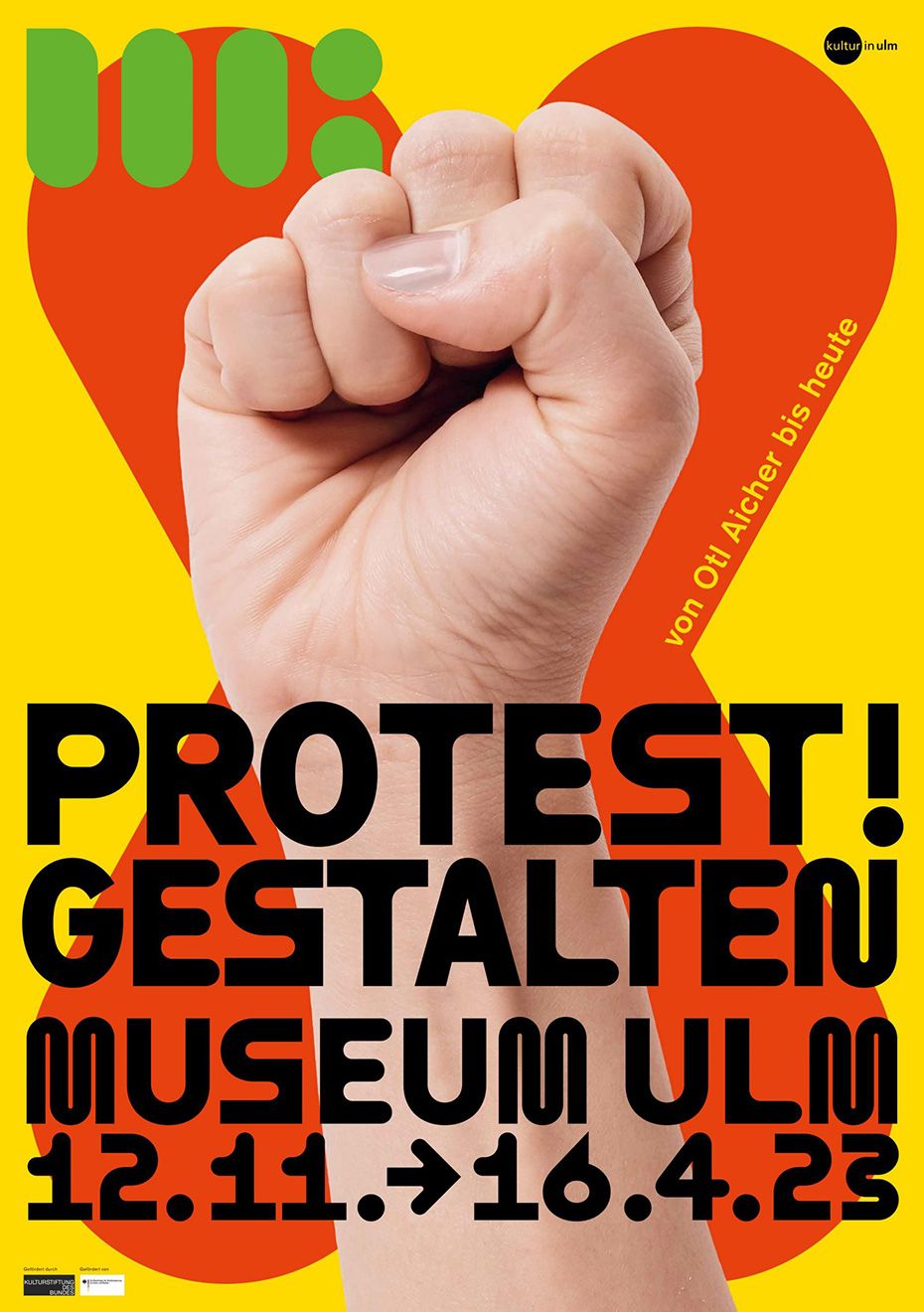
HfG-Archiv/Museum Ulm, from November 12, 2022 to April 16, 2023
On the occasion of the 100th birthday of Otl Aicher (1922-1991), one of the most influential communication designers of the 20th century, the Museum Ulm presents an exhibition that focuses on the design of opposition and protest in international contemporary culture.
Protest and civil disobedience were strong traits of Otl Aicher’s political thinking. Already as a youth he developed a resistant attitude, initially against the appropriation by the National Socialist regime of injustice. Later, his opposition developed into a public confession. It was formative for his design work.
In connection with Otl Aicher’s concerns and the major protest movements of the recent past, the exhibition also shows works and series of works by international artists and graphic artists. In paintings, drawings, image montages, poster and flyer campaigns, neon signs, billboards, videos and animations, they deal with slogans, symbols, gestures and signals of resistance, enlightenment and protest on the topics of environment, peace, democracy, consumption, health, human rights, equality and diversity.
Via the platform nextmuseum.io, artists, creative opinion leaders, activists, students and pupils have also been invited to submit their central ideas and motifs of indignation, contradiction and opposition in imaginative formulations and visualisations, which will be given a forum in the exhibition.
Funded by the Kulturstiftung des Bundes (German Federal Cultural Foundation)
At the same time, the Museum Ulm is still showing the cabinet exhibition of Aicher’s comrade-in-arms Franco Clivio, which the museum opened on the occasion of his 80th birthday: “Manifolds: !” is the title, the play on words with the terms “manifolds” and “manual folds” is intended to show Franco Clivio as a designer with humor and a sense for playful explorations of form. On view is an extensive series of objects consisting of geometric structures of lines and planes with expansive potential. The run of the show has been extended until February 12, 2023.
Museum Ulm
Marktplatz 9, 89073 Ulm
Tue – Sun & public holiday 11–17 h
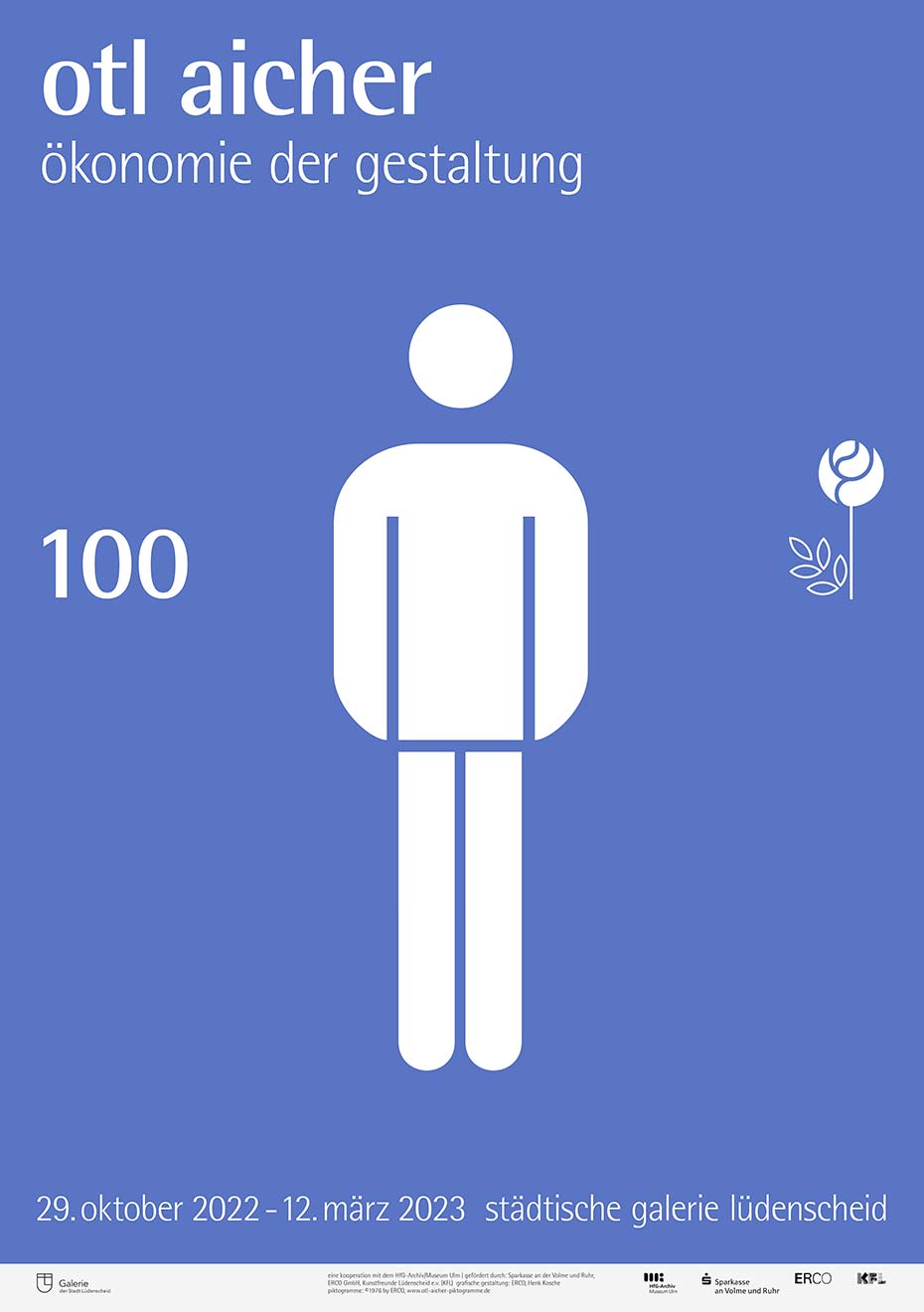
City Gallery Lüdenscheid, from October 29, 2022 to March,12, 2023
As a pioneer of 20th century corporate design, Aicher was considered authoritative and uncompromising. Two enduring subjects of German design, minimalism and system, were left a lasting impact by him.
Aicher left his mark in Lüdenscheid: The intensive collaboration with Klaus Jürgen Maack (1938-2019) and the Lüdenscheid-based company ERCO began in the fall of 1974, initially concerning the rights to use the pictograms designed by Aicher. In the years that followed, he developed an internationally acclaimed corporate design for ERCO, the basic features of which have been preserved. Aicher’s uncompromising spirit continues to characterize the Lüdenscheid-based company to this day.
For Aicher, design was always political: he understood design as social communication. Everyday objects should make life easier, not more complicated by superfluous ornamentation and useless flourishes. His pictogram system, developed in 1972 for the Olympic Games, conveys information across languages using pictorial symbols.
The exhibition otl aicher – economy of design presents Aicher’s innovative design work, which is based on thoughtful consistency and sustainability. It focuses on companies from the region for which Aicher worked and projects that affect the city of Lüdenscheid.
“otl aicher – economy of design”
City Gallery Lüdenscheid
Sauerfelder Strasse 14-20, 58511 Lüdenscheid
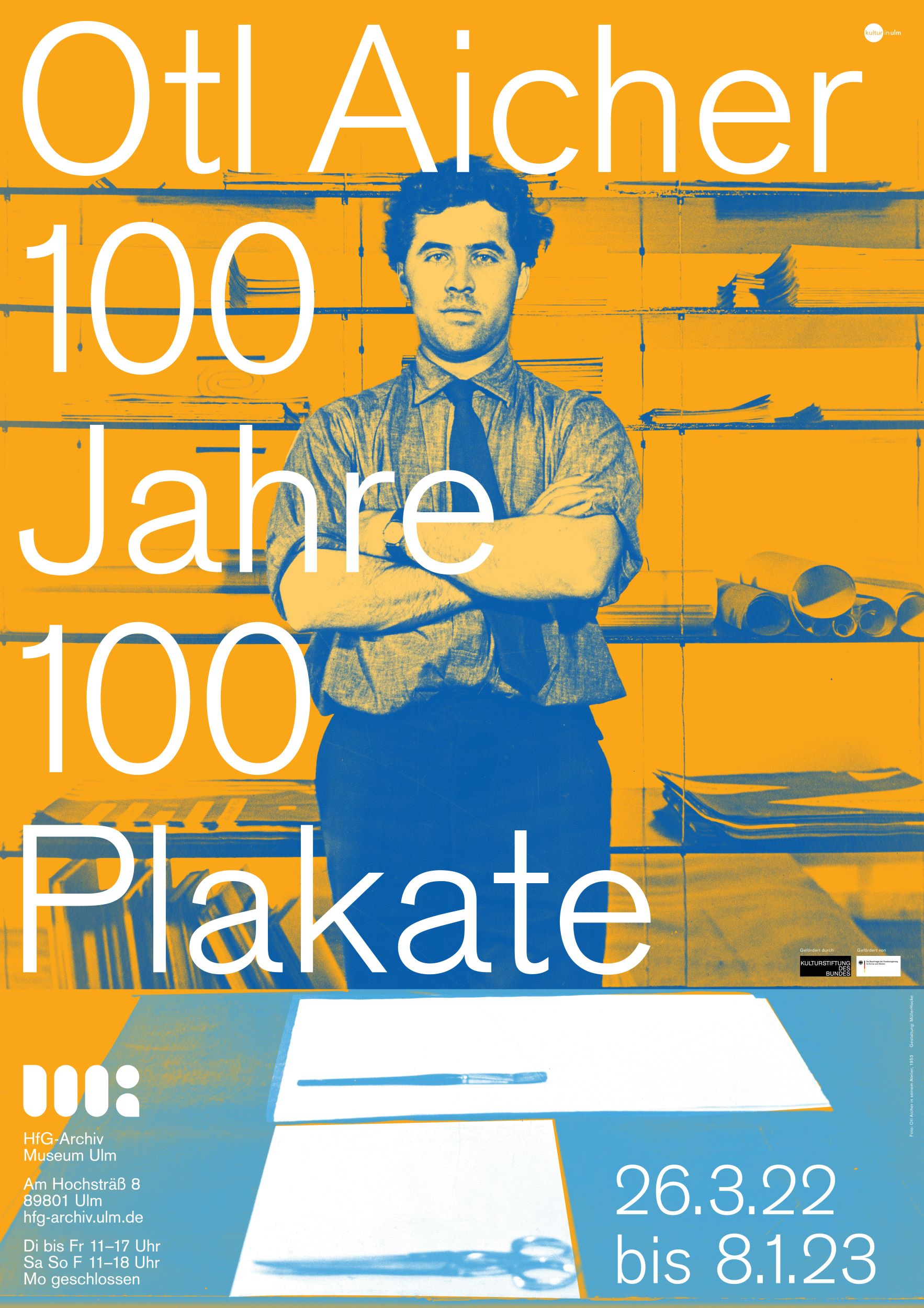
Museum Ulm/ HfG-Archive, until January 8, 2023
“Otl Aicher 100 Years 100 Posters“ is the title of an exhibition that is being shown in the rooms of the HfG Archive on Ulm’s Kuhberg; it has been running since the end of March. This is where the designer’s estate is located, which the Museum Ulm/HfG Archive are maintaining and processing; in the meantime, it has been documented in a finding aid. The show is dedicated to a central complex of works. Beginning in 1945, Aicher created autodidactically posters , initially for a series of lectures by theologians and writers that he organised in the midst of war-torn Ulm. He soon added further design elements to the pure text posters. This series gave rise to the foundations of the Ulm Adult Education Centre (vh), which was run by Inge Scholl and developed a unique and demanding programme for which Aicher created the posters. For this, he used a narrow vertical format. Special steles, also designed by him and adapted to this format, announced the programme of the Adult Education Centre in an increasingly modern visual language. Aicher moved from one-off prints to serially designed communication devices. In addition to early examples of Aichers work, also posters of Aicher’s probably most important team project, the holistic design of the 1972 Olympic Games in Munich, are shown. His posters for various cultural events, for political occasions and for companies are also on display. They impressively demonstrate the diversity of his graphic work and his thematic interests. During the exhibition, special showcases will alternate monthly to focus on individual aspects that bring the photographer, architect and furniture designer Aicher to life.
“Otl Aicher 100 Years 100 Posters”
HfG Archive / Ulm Museum
Am Hochsträß 8, 89081 Ulm
Museum Ulm/ HfG-Archive, from November 12, 2022 to April 16, 2023
With the exhibition “Otl Aicher 100: Form and Resistance” the Museum Ulm and the HfG-Archive are eager to give the viewer an impression of visual forms of design of protest movements. The exhibition is going to take place at two different locations: at the museum at the marketplace, and at the HfG-Archive at the Kuhberg. Aichers oeuvre will be placed with contemporary sociocritical positions. Against this backdrop also the question of actuality of the work and impact of the 1991 deceased designer will be discussed. Already as a teenager, Aicher resisted the NS-Regime. Due to him not joining the Hitler Youth he was denied his Abitur. The exhibition management points out that “his political stance grounded his entire oeuvre.” Since the Sixties Aicher designed logos and posters, not only for companies, but also for political resistance and protest groups.
The first part of the exhibition, the Ulmer Schau from the HfG Archive introduces Aicher’s work, while at the second part of the exhibition, the Museum Ulm will oppose contemporary positions. With the often large-scale works shown there, conceived for public spaces, photographers, installation artists, street artists and graphic artists protest with artistic means against discrimination, violence or excessive consumption. On display are works from the street artists Robin Rhode, he deals with the identity question in South Africa. The Graphic designer Norma Bar displays his “Wear-a-mask” campaign, which is about solidary in the pandemic. An illuminated installation by US conceptual artist Jenny Holzer addresses violence against women. A selected number of Posters that deal with socio-political issues by the US conceptual artists and feminist Barbara Kruger can be found in the city center of Ulm. Through an Open Call, the Museum Ulm invites people to document further contemporary forms of design that deal with protest. These will be shown online.
“Otl Aicher 100: Form and Resistance – Between Typography and Protest”.
HfG Archive / Museum Ulm
HfG Archive, Ulm Kuhberg, Am Hochsträß 8, and Museum Ulm, Marktplatz 9, 89073 Ulm, Germany

Bröhan-Museum, Berlin, from August 25 to October 31, 2022
For Otl Aicher, the 1936 Olympic Games were the negative foil for the design of the Games he had in mind for Munich, which were conceived as cheerful. He recognised the quality of the work that was being done there, even if he radically rejected the result. Berlin had been awarded the contract to host the Games during the Weimar Republic. The Nazi state also involved art and design in order to consolidate and propagandistically demonstrate its total rule. But Aicher, in cooperation with NOK President Willi Daume, understood the potential that holistically designed games offered for the young Federal Republic when he became design commissioner for the Olympics in 1967.
Thus, his designs for Munich 1972 were intended to make openness visible and tangible: The design team he selected – young women and men, mostly at the beginning of their careers – created a versatile communication offer. It was aimed at Olympic guests, sportsmen and sportswomen as well as Munich city citizens. In this way, Aicher made a significant contribution to the modernisation of Munich and the transformation of Bavaria’s image. Pictograms, which Aicher did not invent but systematised, soon became established in the context of airports or metro systems, especially when he designed them himself.
Munich’s signage systems, like the temporary Olympic installations in the city, were mostly reserved for visitors attending the Games. But collectors and institutions preserve valuable design testimonies from Munich ’72 that are not tied to a specific location. These include the large silkscreen posters for all the various sports. For each one, the designers created a convincing combination of photography and illustration.
Now the Bröhan Museum, directed by the Munich native Tobias Hoffmann, is showing the exhibition “Otl Aicher and the 1972 Olympic Games” in its Blackbox series. On display are about 100 exhibits, mainly from a private collection, but also partly from the museum’s holdings. Among the objects on display are original posters, but also items of clothing such as hostess uniforms or dirndls. Anyone who wants to experience the design of “Munich 1972” should therefore travel to Berlin.
Otl Aicher and the 1972 Olympic Games, Blackbox #11.
Bröhan Museum
Schlossstraße 1a, 14059 Berlin
Detmold; Lippisches Landesmuseum, from May 18 to August 28, 2022
From the 1980s onwards, the collaboration with Otl Aicher led to a new, systematically developed corporate design and a series of publications for FSB. In the exchange between FSB’s former managing director Jürgen Werner Braun and Aicher, it was not only the door handles of the Brakel-based manufacturer that became the subject of gripping. The manufacturer of door and window mountings is now sponsoring a series of university projects dealing with Aicher’s theses and ideas. One of the first results is an exhibition: “Otl Aicher – piktogramm, schrift, logo” in the Lippisches Landesmuseum Detmold. The life and work of the graphic designer and publicist are presented from the perspective of nine students and three professors from two departments at the Ostwestfalen-Lippe University of Applied Sciences (TH OWL).
In addition to seeing Aicher as the pioneer of corporate design, Detmold also focuses on Aicher as a politically active, controversial citizen. The small show is designed as a touring exhibition, with further stops planned.
Lippisches Landesmuseum Detmold
Ameide 4, 32756 Detmold
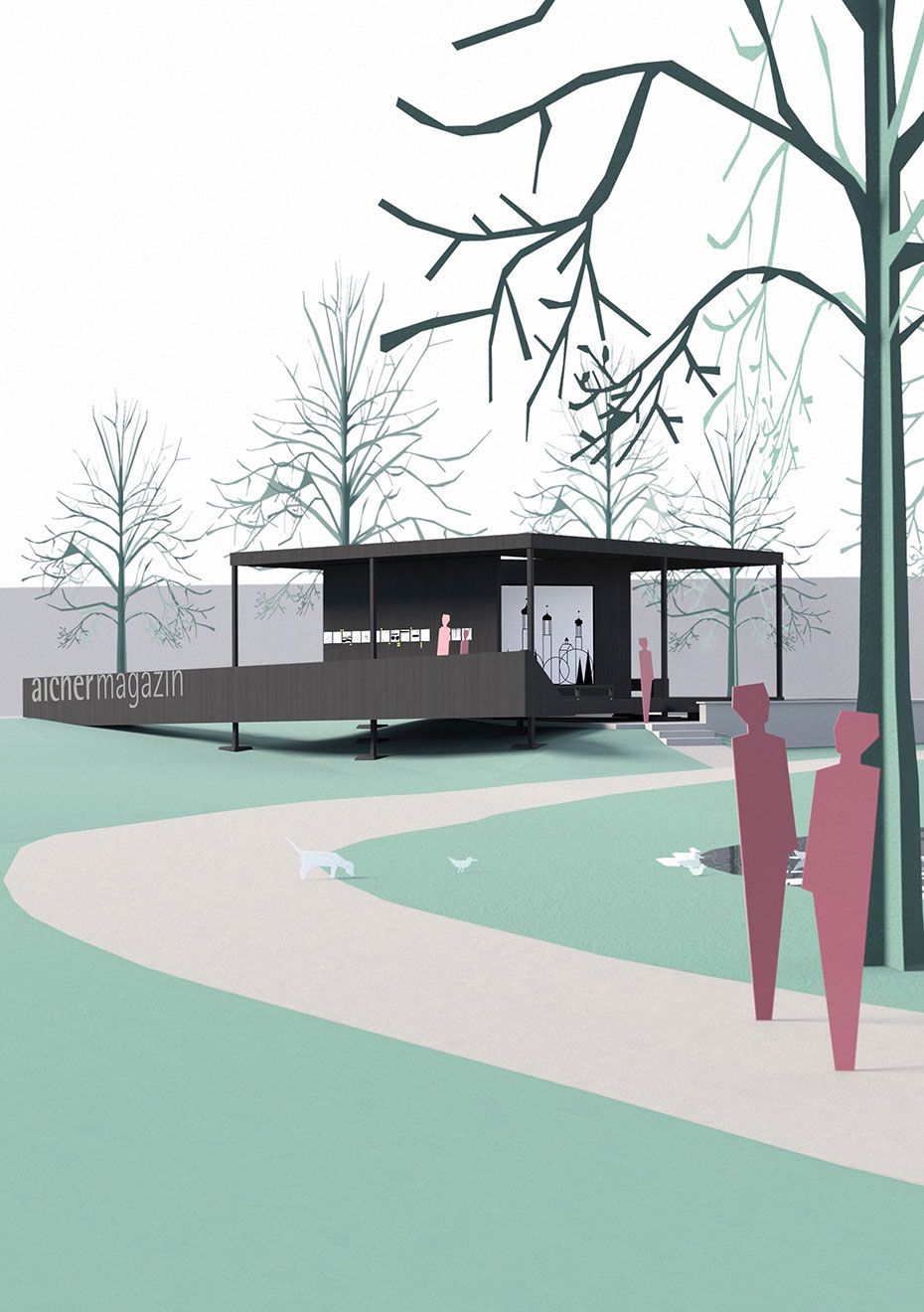
Kurpark Isny, from May 21 to October 2022
Under the slogan isnyaicher22, the town of Isny im Allgäu recalls the establishment of the town’s black and white image, which Aicher created in the 1970s and which is still used in town marketing today. A temporary exhibition building called “aichermagazin” is being built in Isny’s Kurpark. Here, curators Monika Schnell and Renate Breuß will trace the connection between the city and the designer. Outside, Aicher’s pictorial signs are shown, which address the city and the region. In addition, stories from locals and experts can be accessed via smartphone and QR code, narrating traditions and crafts, landscapes and nature, and reporting on the everyday life of some Isny residents. “Aicher’s pictorial signs are part of the cultural heritage of the town of Isny,” says Renate Breuß, “just like the historical buildings as well. The pictorial signs themselves, like their pool of characters, may not be altered, yet Breuß, who used to be the managing director of the “Werkraum Bregenzerwald”, thinks there is “a lot of potential and dynamism in the compilation,” because Aicher’s legacy “is not to be understood as dogma.” A gallery, a closed room was out of the question for the presentation, notes Karin Konrad of Isny Stadtmarketing, “The exhibition has to go right into the city,” she says, “to the people for whom he created the unique appearance.”
The interior of the pavilion is about Aicher’s life and work. Texts and photos also deal with Rotis, the place about 20 kilometres north of Isny where Aicher lived and worked. The aim is to illustrate Aicher’s “field research approach”, which shaped his ideas and creativity – also in his work for Isny. The aichermagazin is accessible free of charge at all times. A complementary supporting programme focuses on the writer Günter Herburger (1932-2018), with whom Aicher worked and who was born in Isny 90 years ago.
aichermagazin
Kurpark Isny
Unterer Grabenweg 18, 88316 Isny im Allgäu
freely accessible around the clock